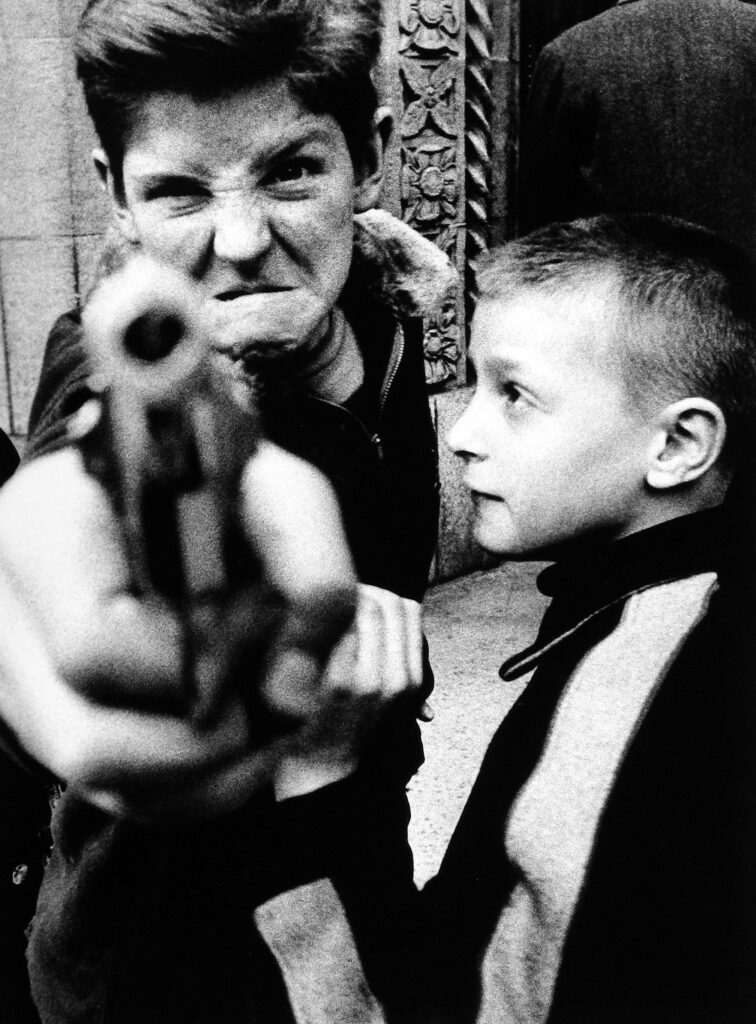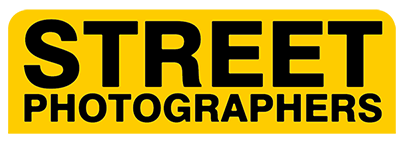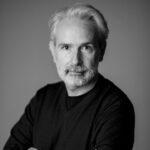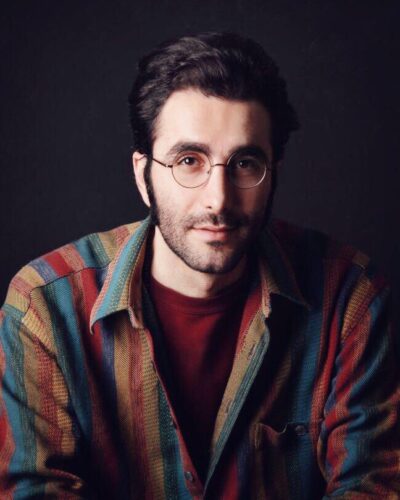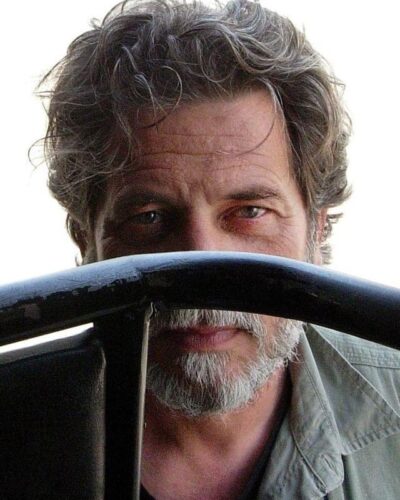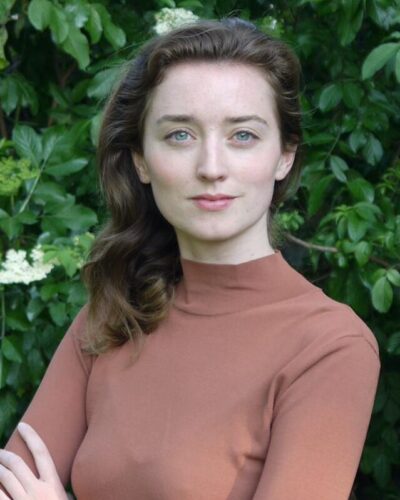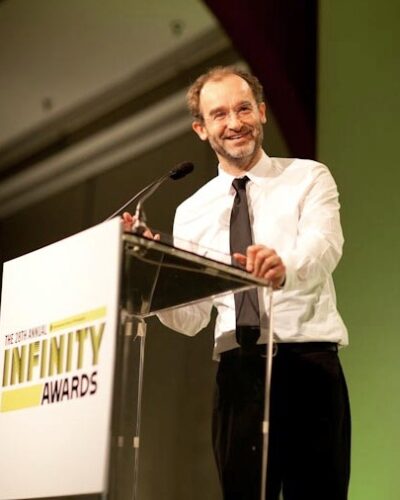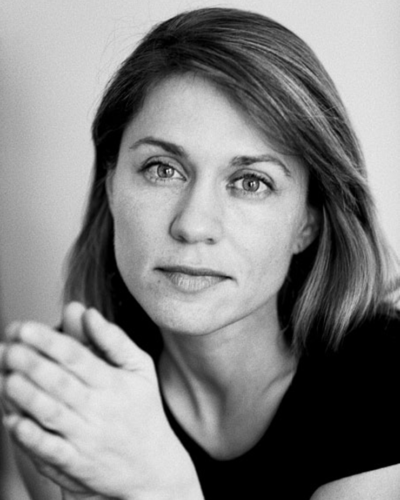The Best Street Photographers of All Time
Street Photography is one of the most challenging and exciting genres of photography. Sometimes when we see a photo, it gets into our mind and remains eternal for life. This could be moments of sorrow and pain, a disaster happening in the world, usual human interaction in our society, or even a moment of everyday life.
Having awareness of photography history and the famous actors of that history will definitely make you a better photographer. If you are trying to capture perfect photographs, knowing the masters of photography will show you what makes a photograph perfect.
In this article, we will introduce some of impressive master photographers in this genre. Stay with us.
Alex Webb
Alex Webb (born 1952) is a Magnum photographer who uses strong colors, light, and emotion to capture beautifully complex images. Depth is a strong element in his works, he is a master of capturing serendipitous moments in full-blown technicolor. He has an eye for the unusual and a knack for capturing unexpected moments. With an acute focus on the more serendipitous frames, as opposed to simply documenting one thing, he finds influence in a melting pot of countries, cultures and subcultures.
Quotes:
“A street photographer wanders and responds spontaneously to what he or she finds, rather than consciously searching for specific things, letting the world—and one’s unconscious—lead one where it will. This initial approach or attitude makes street photography different from more directed photojournalism, in which there is a conscious effort to find a ‘story’—and also makes street photography different from more conceptual photography, in which there is often a preconceived agenda.”
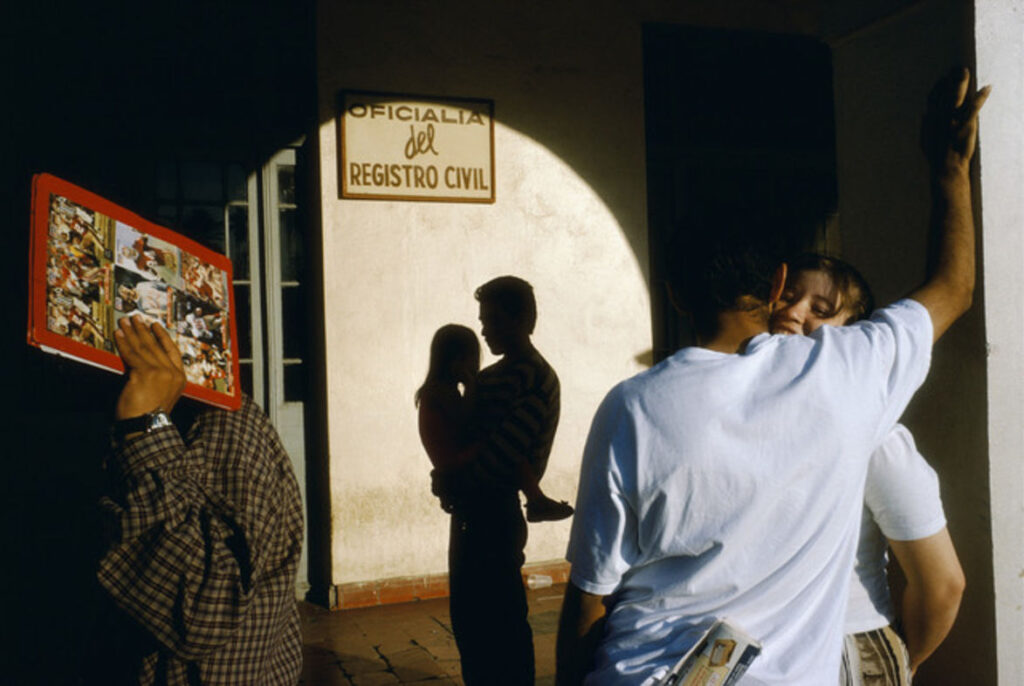
Alfred Eisenstaedt
Alfred Eisenstaedt (born 1898) was one of the luminaries of German-born American photographer. He is best known for his candid black-and-white shots of celebrities, politicians, and captivating street shots. He was among those Europeans who pioneered the use of the 35-millimeter camera in photojournalism to get closer to his subjects and create more candid pictures.
Eisenstaedt was a master at finding the details that tell the big story. His style was unaffected and naturalistic; he let his subjects speak for themselves.
Eisenstaedt perfected certain techniques for capturing the spontaneous moment that has given us some of our most enduring photographic images. Also, he was a favorite among editors, not only for his quick eye but also for his ability in making good photographs of any situation or event. He became one of only four original staffers on Life magazine, winning numerous awards for his memorable images. Referred to as one of the founding fathers of photojournalism, he completed around 2500 photo-essays and ninety cover photographs for the magazine.
Quotes:
“Today’s photographers think differently. Many can’t see real light anymore. They think only in terms of strobe – sure, it all looks beautiful but it’s not really seeing. If you have the eyes to see it, the nuances of light are already there on the subject’s face. If your thinking is confined to strobe light sources, your palette becomes very mean – which is the reason I photograph only in available light.”
“I dream that someday the step between my mind and my finger will no longer be needed. And that simply by blinking my eyes, I shall make pictures. Then, I think, I shall really have become a photographer.”
“It is more important to click with people than to click the shutter.”
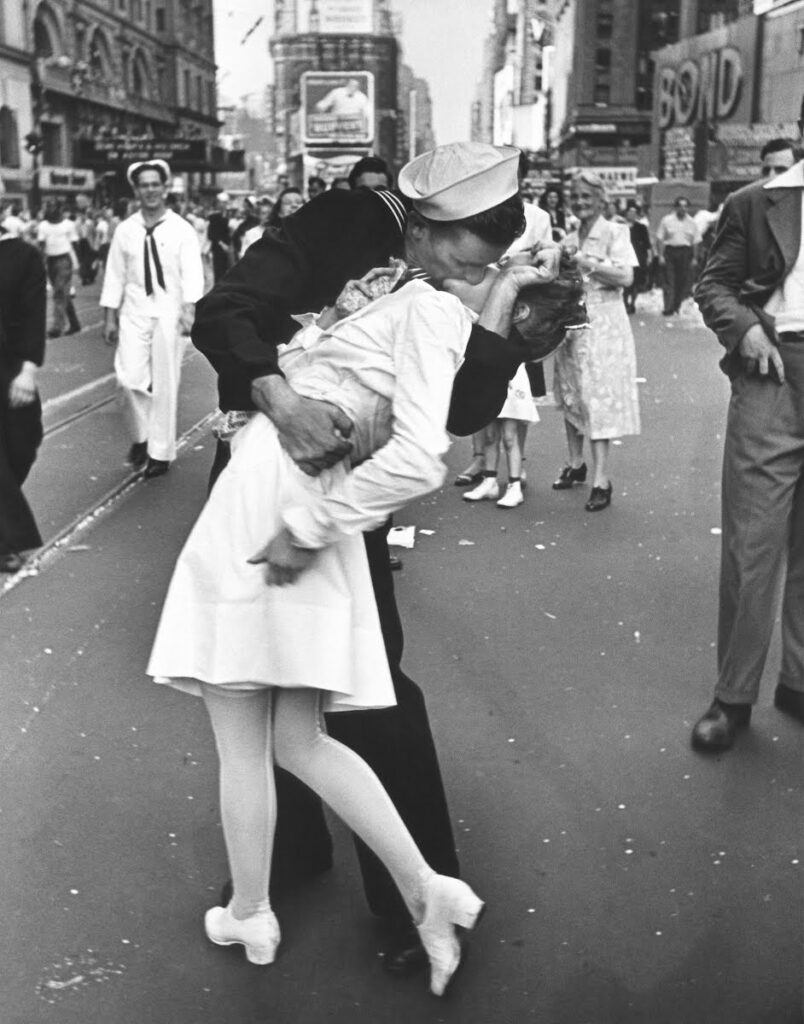
Alfred Stieglitz
Alfred Steiglitz (born 1864) was a renowned American photographer who played a crucial role in establishing photography as an integral part of modern art in America, and contributed greatly to the development of Modernism during the 20th century.
Alfred Stieglitz, founder of the Photo-Secession, a Pictorialist group of photographers, he elevated the discourse and practice of photography, forming key connections between American and European movements.
Stieglitz was feverishly devoted to his work and mission and produced thousands of editions in his lifetime, covering numerous themes that captured a period of rapid transition in American society.
Quotes:
“Photography is not an art. Neither is painting, nor sculpture, literature or music. They are only different media for the individual to express his aesthetic feelings… You do not have to be a painter or a sculptor to be an artist. You may be a shoemaker. You may be creative as such. And, if so, you are a greater artist than the majority of the painters whose work is shown in the art galleries of today.”
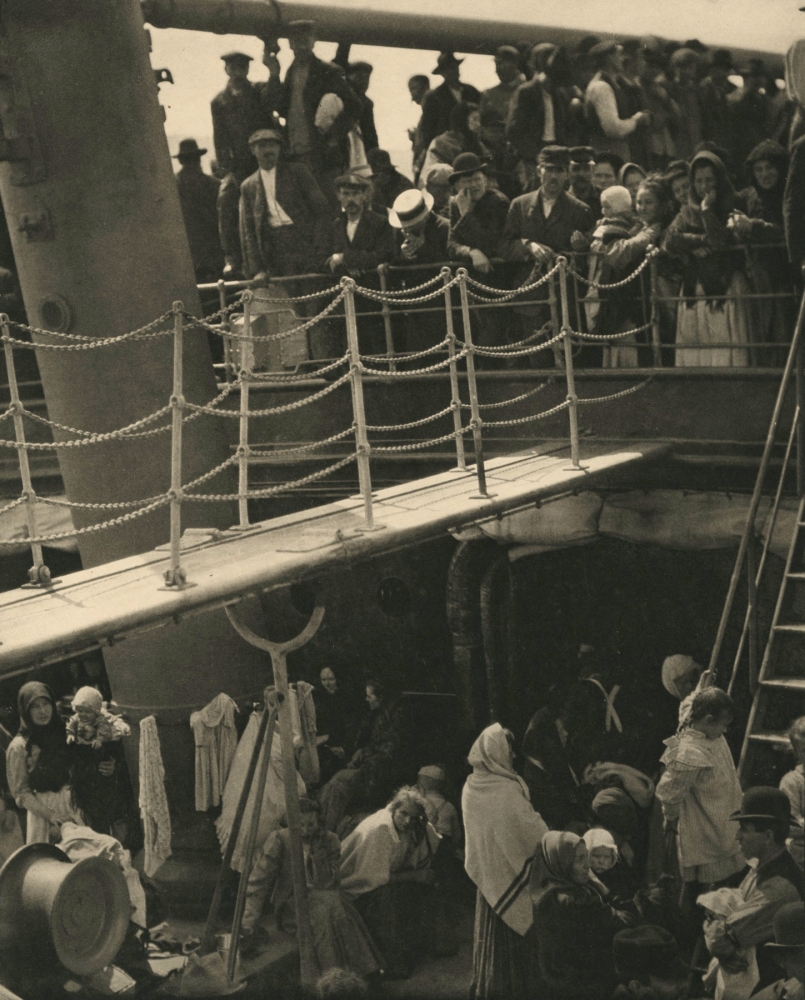
Andre Kertesz
Andre Kertesz (born 1894) is known for his realistic and sensitive scenes of everyday life. He was one of the founders of photojournalism. He pioneered in using a small camera, producing snapshot images with unexpected details.
Kertész remains best known for his contributions to photojournalism, employing distinctively dynamic compositions throughout his influential photo essays.
Prizing emotional impact over technique, he famously remarked, “I just walk around, observing the subject from various angles until the picture elements arrange themselves into a composition that pleases my eye. I do what I feel, that’s all. I am an ordinary photographer working for his own pleasure. That’s all I’ve ever done.”
Quotes:
“Technique isn’t important. Technique is in the blood. Events and mood are more important than good light and the happening is what is important,” he says. “I still regard myself as an amateur today and I hope that’s what I’ll stay until the end of my life. Because I’m forever a beginner who discovers the world again and again.”
“The moment always dictates in my work. What I feel, I do. This is the most important thing for me. Everybody can look, but they don’t necessarily see. I never calculate or consider; I see a situation and I know that it’s right, even if I have to go back to get the proper lighting.”
“If you want to write you should learn the alphabet. You write and write and in the end you have a beautiful, perfect alphabet. But it isn’t the alphabet that is important. The important thing is what you are writing, what you are expressing. The same thing goes for photography. Photographs can be technically perfect and even beautiful, but they have no expression.”

Berenice Abbott
Berenice Abbott (born 1898) was a pioneer American documentary photographer.
She is remembered as one of the most independent, determined and respected photographers of the twentieth century.
She is best known for her striking, black-and-white documentation of New York City and preservation of the works of Eugène Atget.
Berenice Abbott was an enthusiastic proponent of modernism in photography, and was strongly opposed to picturalism, the painterly style that dominated photography in the early 20th century. In her view a good photograph was shaped by the specific characteristics of photography itself, and not by those of painting.
She worked on a specially designed lighting process, which she called Projection Photography. Abbott also invented and patented other photographic related equipment and gadgets.
Quotes:
“A photograph is not a painting, a poem, a symphony, a dance. It is not just a pretty picture, not an exercise in contortionist techniques and sheer print quality,”
“There are many teachers who could ruin you. Before you know it you could be a pale copy of this teacher or that teacher. You have to evolve on your own.”
“Photography can never grow up if it imitates some other medium. It has to walk alone; it has to be itself.”
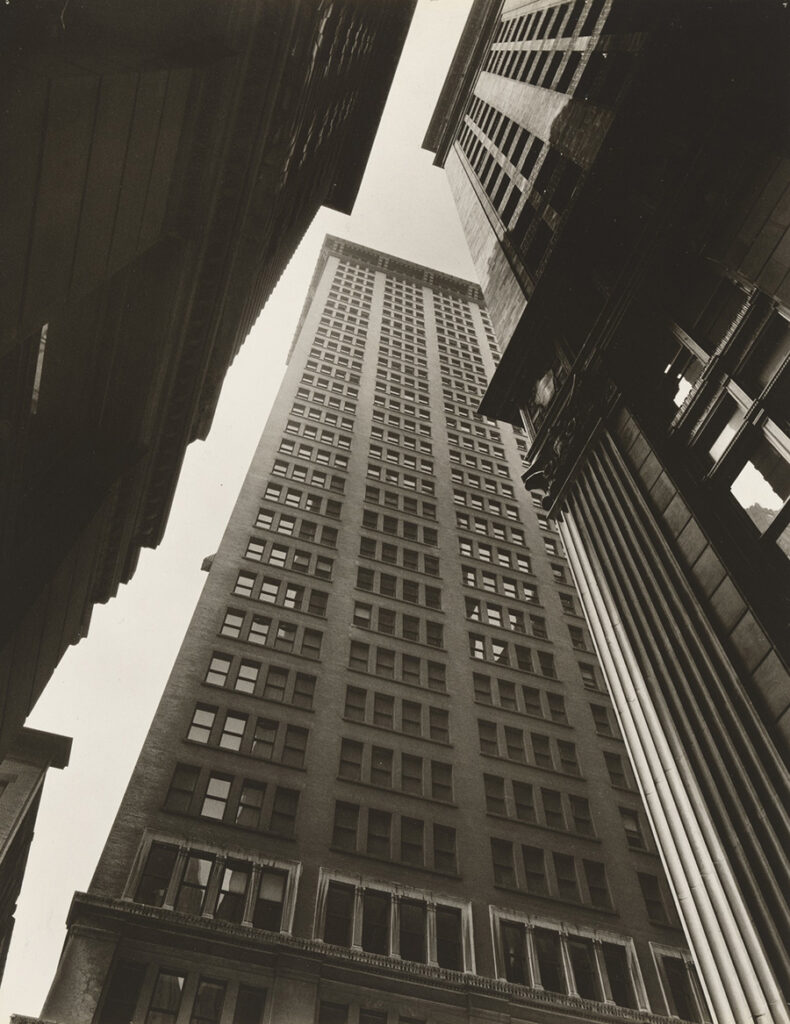
Bill Cunningham
Bill Cunningham (born 1929) was an American street and fashion photographer who considered the forefather of street style photography.
His works show that street style is not only about fashion; it’s about the people and the changing culture. He shared his photos in a fashion column for the New York Times, called “On the Street.” His photography was capturing the evolution of style, of trends, and of every day, both in New York City and in Paris.
He made a career taking unexpected photographs of everyday people, socialites, and fashion personalities, many of whom valued his company. He was a self-taught photographer. Most of his pictures were never sold or published. He said: “I’m really doing this for myself. I’m stealing people’s shadows, so I don’t feel as guilty when I don’t sell them.”
Quotes:
“ The problem is I’m not a good photographer. To be perfectly honest, I’m too shy. Not aggressive enough. Well, I’m not aggressive at all. I just loved to see wonderfully dressed women, and I still do. That’s all there is to it.”
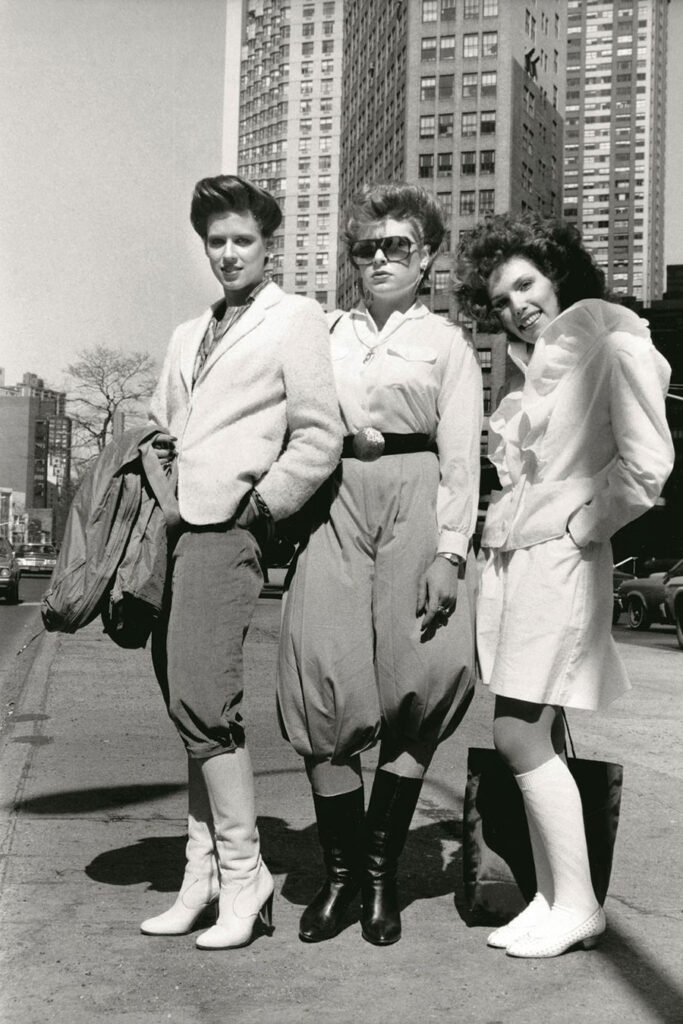
Brassaï
Gyula Halász, known as Brassaï, (born 1899) was a Hungarian–French photographer, sculptor, medalist, writer, and filmmaker who rose to international fame in France in the 20th century. Brassaï was one of the numerous Hungarian artists who flourished in Paris beginning between the world wars. He is known for his unique and unusual depiction of commercial and avant-garde art.
He was one of the first photographers to photograph the city at night, probably because the materials and equipment used during the day would not perform as well during the night. He would walk the mysterious city streets for hours at a time until he knew it the back of his hand. He is famous for capturing the grittier aspects of the city, he also documented high society, including the ballet, opera, and intellectuals—among them his friends and contemporaries. He credited with creating countless iconic images of 1920s Parisian life.
Quotes:
“We should try, without creasing to tear ourselves constantly by leaving our subjects and even photography itself from time to time, in order that we may come back to them with reawakened zest, with the virginal eye. That is the most precious thing we can possess.”
“Chance is always there. We all use it. The difference is a poor photographer meets chance one out of a hundred times and a good photographer meets chance all the time.”
“My images were surreal simply in the sense that my vision brought out the fantastic dimension of reality. My only aim was to express reality, for there is nothing more surreal than reality itself. If reality fails to fill us with wonder, it is because we have fallen into the habit of seeing it as ordinary.”
“The purpose of art is to raise people to a higher level of awareness than they would otherwise attain on their own.”
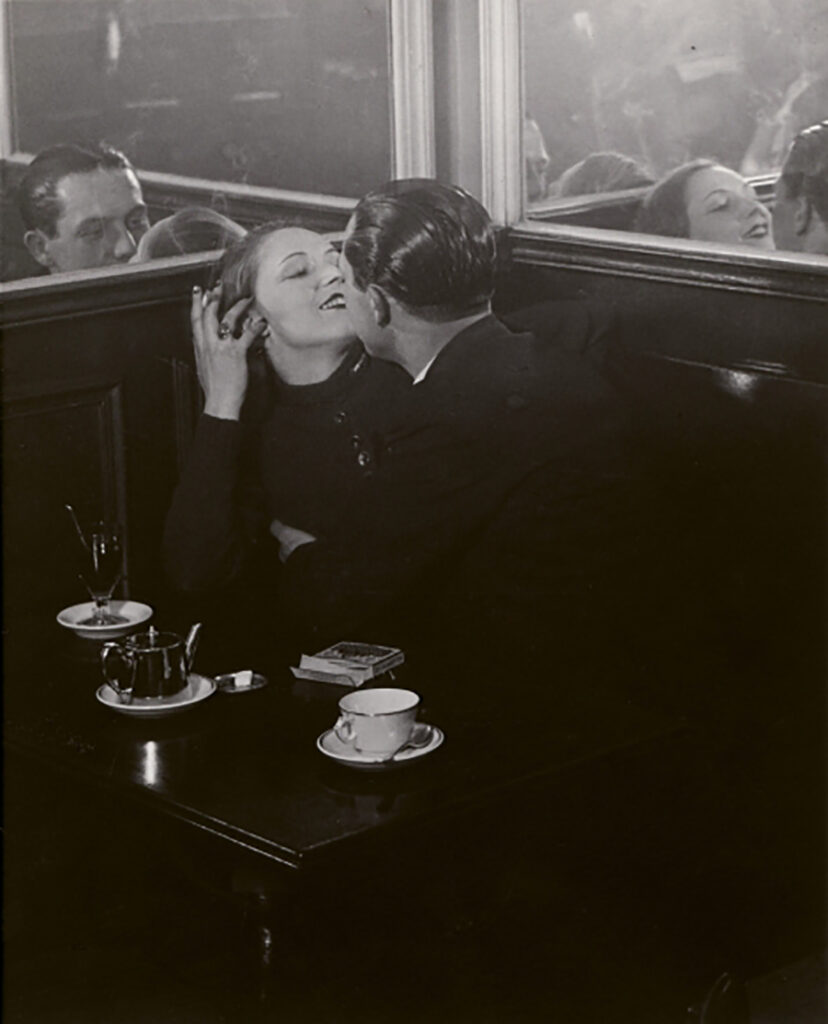
Bruce Davidson
Bruce Davidson (born 1933) remains one of the world’s greatest photographers. A member of the Magnum Photos agency.
He is known for capturing images of communities and individuals living on the fringes of society and dedication to the documentation of social inequality. His images frequently convey the loneliness and isolation of the subjects portrayed.
Although Davidson wouldn’t consider himself a street photographer, we can learn very much from Davidson’s experiences. His photographs show a keen desire to reveal and understand the complexities of individual lives and reflect universal truths and concerns. Most of Davidson’s protagonists show the proximity between the photographer and his subjects, both spatially and emotionally.
When he chooses a project, he sticks with it and pursues it for several months, and often several years. He is a man that cares deeply for his subjects and cares more about his relationships with them than the photos themselves.
Quotes:
“l am a photographer who uses various professional cameras and film formats to express the way I see and explore reality. Cameras become an extension of my vision and I need to love the thing. Each tool has its purpose and it is up to me to choose one to use for a particular photographic project”
“All my photographs are portraits—self-portraits, because you can’t photograph someone without reflecting/echoing, like a bat sending out a signal that comes back to you. You get not only a picture of who you’re photographing, but you get a picture of yourself at the same time,” he says. “Most of my photographs are compassionate, gentle, and personal. They tend to let the viewer see himself. They tend not to preach. And they tend not to pose as art.”
“Taking photographs, taking candid photographs, means that the photographer is an invisible man. Whereas there is still a feeling that in having a photograph taken there is loss of face: something of the soul is gone.”
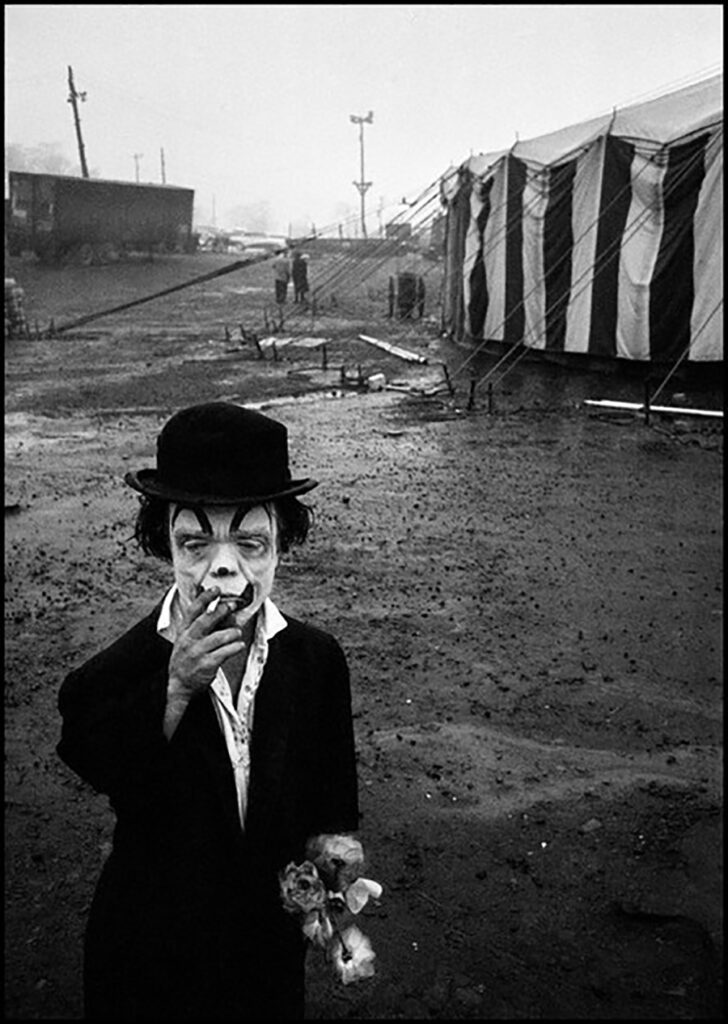
Bruce Gilden
Bruce Gilden (born in 1946) is one of the most influential Magnum photographers and one of the most iconic street photographers of our time.
Gilden is known for up close, black and white photographs punctuated by off-camera flash and for the way he pushes the limits of the frame with his sheer proximity to his subjects. He doesn’t do it simply to scare people, but he uses it in an artistic way, angling his flash to highlight the human drama and theater. He does this to highlight the anxiety of his subjects in the city in which he is photographing in. His aggressive, insistent and invasive approach to New York street photography has left many street photographers, who often pride themselves on being invisible, aghast.
Quotes:
“I’m known for taking pictures very close and the older I get, the closer I get.”
“I think, to be a good photographer, you don’t have to be a genius but you have to have an aptitude and a degree of talent. You have to persevere. You have to stay the course. You have to try. Even if you’re not feeling well, you’re trudging. It is hard. But you continue to do it. I like to say that street photography is when you can smell the street and feel the dirt,”
“I love the people I photograph. I mean, they’re my friends. I’ve never met most of them or I don’t know them at all, yet through my images I live with them.”
“If you can smell the street by looking at the photo, it’s a street photograph.”
“I’m photographing myself out there. Not myself physically, but mentally. It’s my take on the world.”
“I have very good bedside manner from all the years on the streets, it’s like playing sports. You don’t have time to think. You act and react.”
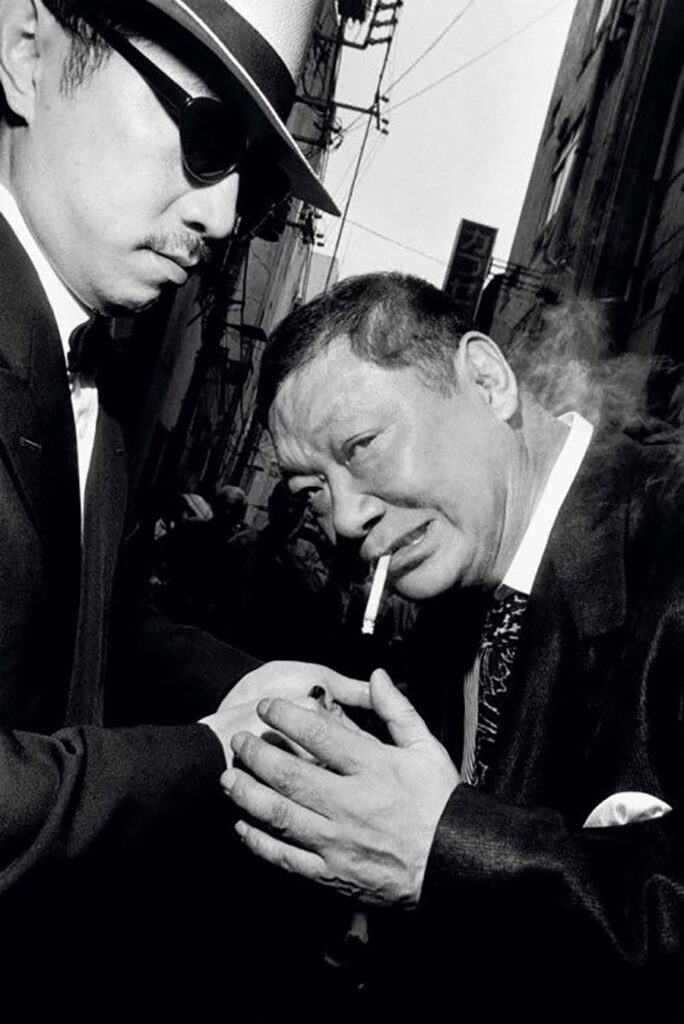
Constantine Manos
Constantine Manos (born 1934) is a Greek-American Magnum photographer. He characterized by dramatic compositions and a passion for the human detail. His most distinctive images show a passion for unyielding natural light wherever he finds it.
His way of seeing helped him capture sharp, pure and breathtaking bits of human life. Constantine Manos can easily trigger feelings ranging from sadness and sympathy to joy with his photographs, a mark of a great documenter.
For Costa, the print is a reflection of the art of photography that illustrates the craftsmanship of its creator. It is part of a process in which one does not just take a picture but makes a picture. He believes that, “…a photograph doesn’t exist, until it is printed.”
Quotes:
“Taking good pictures is easy. Making very good pictures is difficult. Making great pictures is almost impossible”.
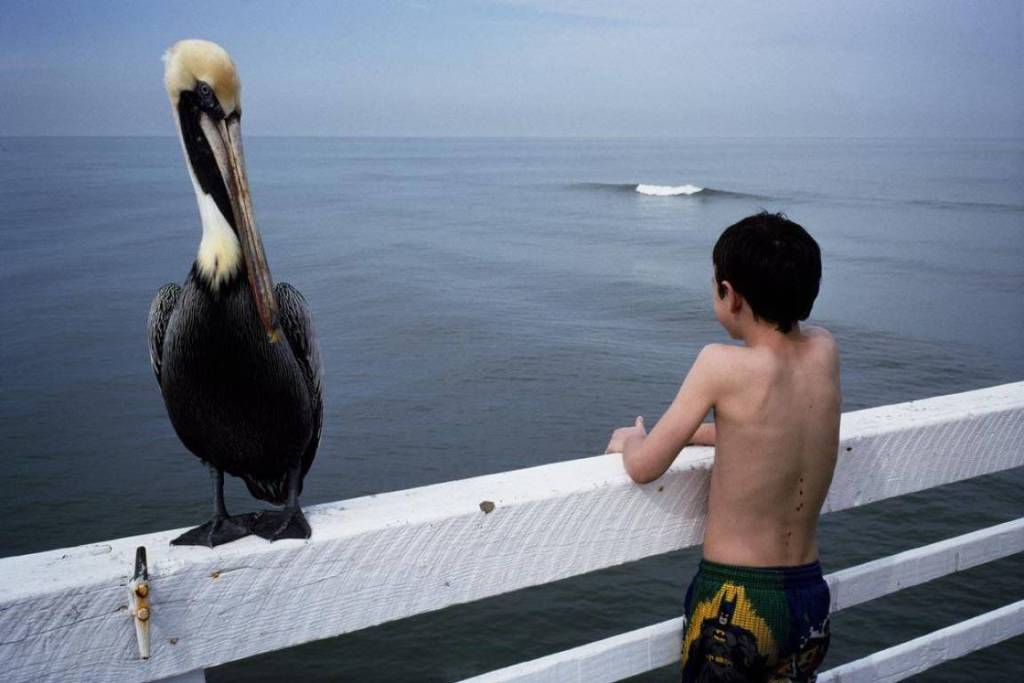
Daido Moriyama
Daido Moriyama (born 1938) is a Japanese photographer, best known for his confrontational, black-and-white images depicting the breakdown of traditional values during post-war Japan. His style is very easily noticeable, his photographs are normally shots in dark places with very high contrast and are normally shot form odd angles.
His photographs epitomize wabi-sabi, the Japanese aesthetic of finding beauty in imperfection. Moriyama focuses on the lost and the discarded.
He captures a diaristic experience of wandering city streets. “The city has everything: comedy, tragedy, eulogy, eroticism.”
Quotes:
“The crushing force of time is before my eyes, and I myself try to keep pressing the shutter release of the camera. In this inevitable race between the two of us, I feel I am going to be burnt up.”
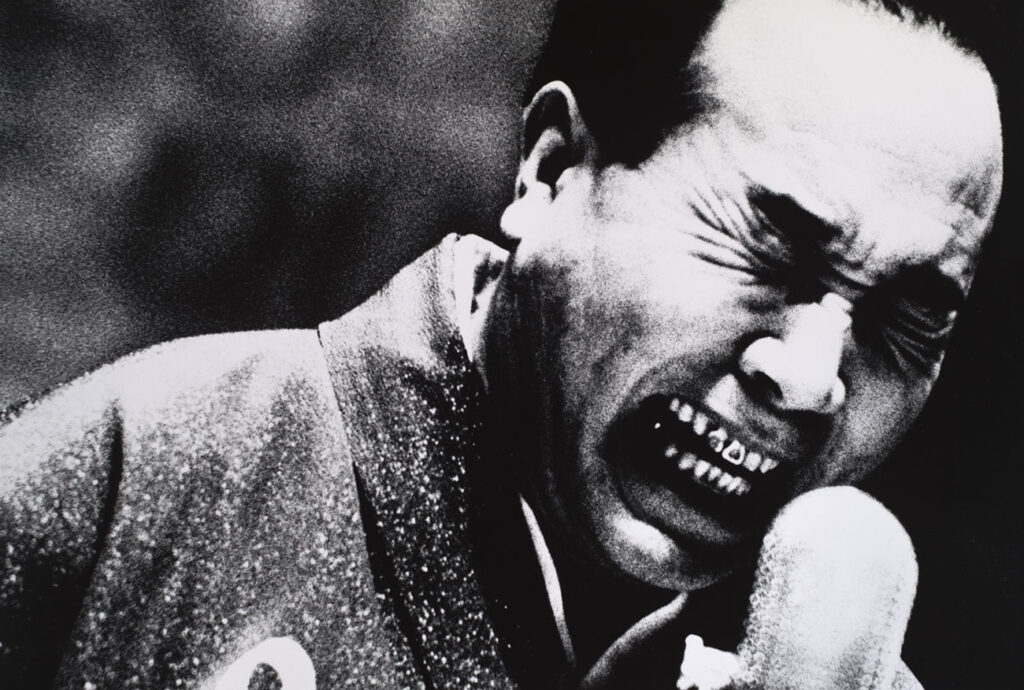
David Alan Harvey
David Alan Harvey (born 1944) is an American based Magnum Photographer. He is one of the living legends in street photography. His photography combines a direct documentary style and emotional mood with his own powerful, personal vision.
The colors he has captured through his street photography is exquisite. He creates many layers in his images and brings out the emotion of situations through the light and colors of a place.
Harvey has photographed over forty essays for National Geographic Magazine and has covered stories in countries across the globe, including Mexico, Kenya, Vietnam, Germany, and more. He is the founder and editor of Burn, a website featuring the work of emerging photographers.
Quotes:
“The whole thrust in my life right now is spinning my assignments around and making them work in a more personal way (…) I wanted to go back and do the original thing: one camera, one lens, one film. You really have to put yourself in a position of danger to be creative.”
“Most of the photographs I make are personal pictures and never end up in print. Even the magazines I shoot for on assignment publish very few of the actual selects. Sometimes these personal pictures will end up in a book of my work. Oftentimes, however, they are simply photographs which I hope resonate, yet rarely find a publication home.”
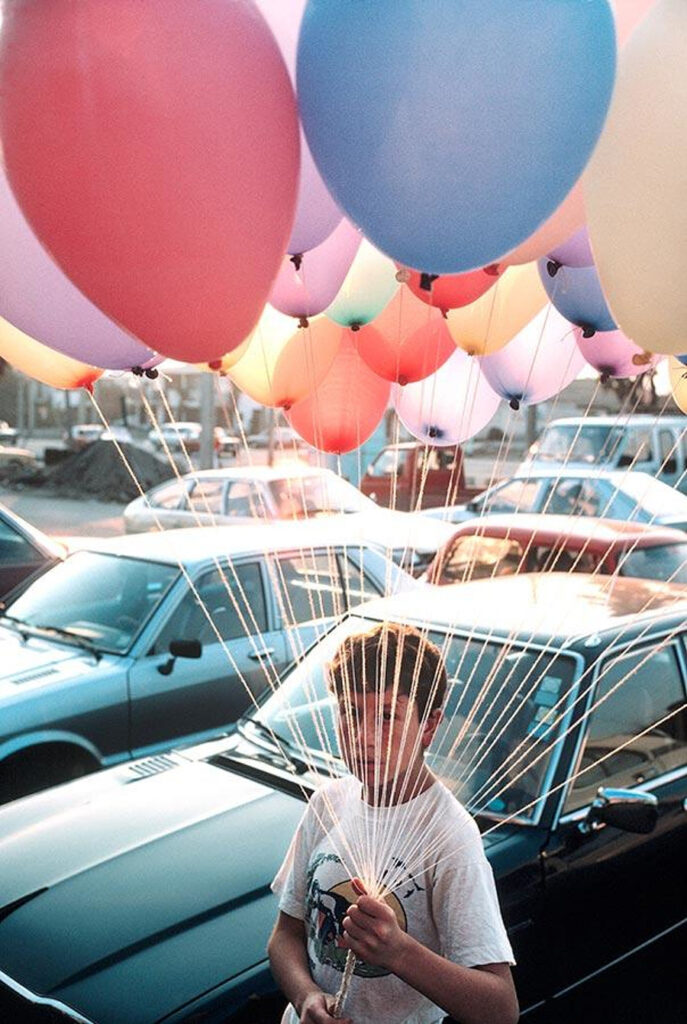
Diane Arbus
Diane Arbus (born 1923) is a photographer best known for black-and-white portraits, square-format and for her compelling portraits of people from the edges of society.
Arbus’s work is highly controversial, eliciting in some viewers an overwhelming sense of compassion, while others find her images bizarre and disturbing.
Her methods included establishing a strong personal relationship with her subjects and re-photographing some of them over many years. One of the unique parts of Arbus’s work is that she approached subjects that nobody else was really photographing at the time.
She truly followed her heart in her photography, and took photos of subjects that both interested her and that she felt compassion and warmth to.
Quotes:
“I hate the idea of composition. I don’t know what good composition is. I mean I guess I must know something about it from doing it a lot and feeling my way into what I like. Sometimes for me composition has to do with a certain brightness or a certain coming to restness and other times it has to do with funny mistakes. There’s a kind of rightness and wrongness and sometimes I like rightness and sometimes I like wrongness. Composition for me is like that.”
“I really believe there are things nobody would see if I didn’t photograph them.”
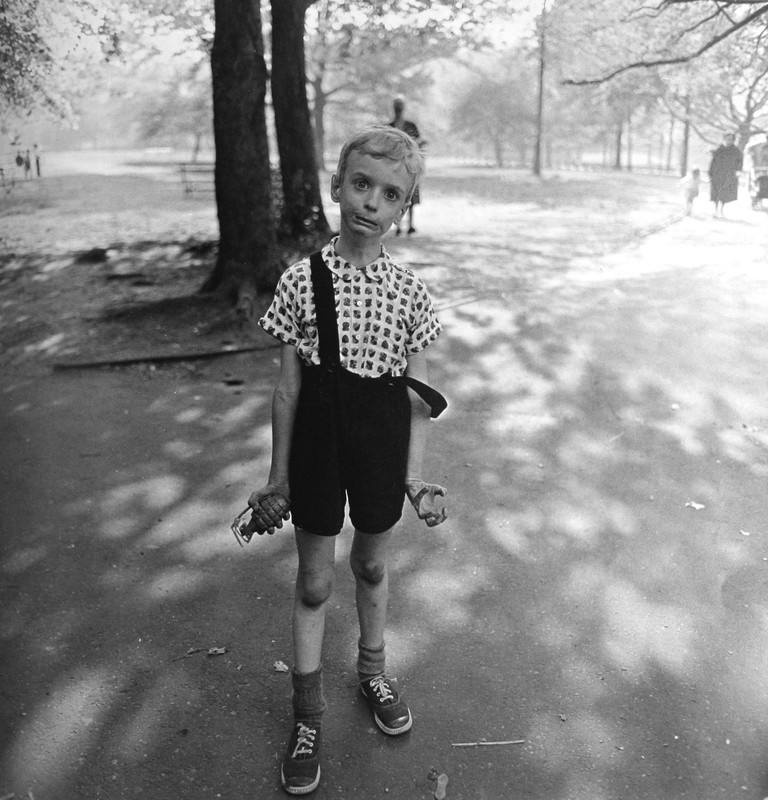
Elliott Erwitt
Elliott Erwitt (born 1928) is an American advertising and documentary photographer Known for his candid and often humorous black-and-white images.He has been a Member of Magnum Photos since 1954.
Erwitt is responsible for some of the most iconic photographs of the 20th century.
He renowned for his humanistic photographs. “You just have to care about what’s around you and have a concern with humanity and the human comedy,” he says.
With his career spanning over several decades has certainly used this framing to his advantage. Because he finds the most interesting photo the next photo he is going to take. So he continues to strive to go out and hunt for that next photo.
Erwitt didn’t make out to become a great or famous photographer. Rather, he saw it as an enjoyable activity and let his photography be an extension of himself. “I’m an amateur photographer, apart from being a professional one, and I think maybe my amateur pictures are the better ones.” He is naturally curious, quirky, and humorous and used his camera to capture that in the world around him.
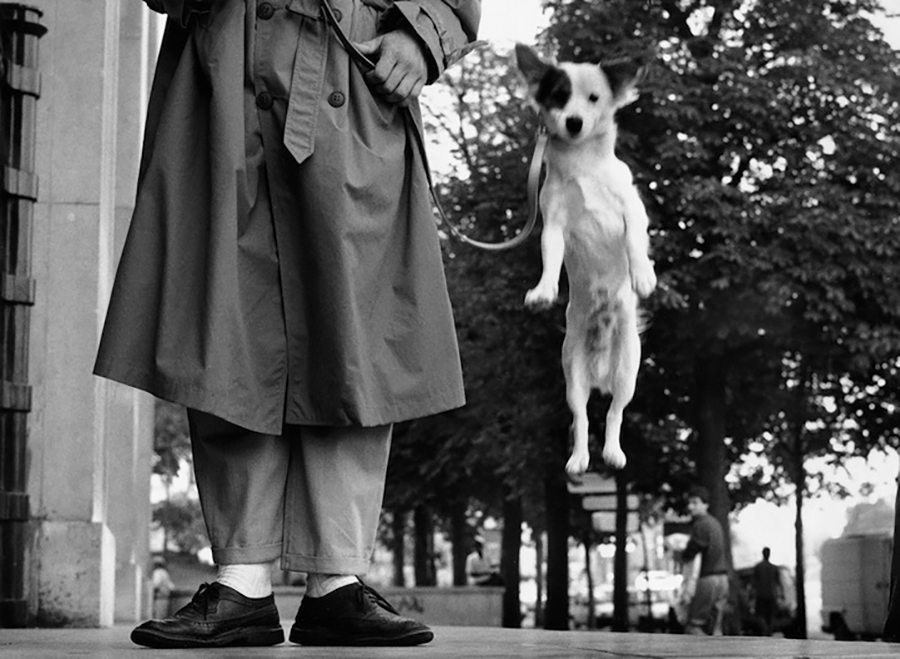
Ernst Haas
Ernst Haas (born 1929) was an Austrian-American photojournalist and the early master of color photography.
Using color also for his personal work, with a pictorial language recalling at times the works by painter Edward Hopper, Haas has been described as a poet photographer. Haas cropped and abstracted, photographed against the light and out of focus, and used reflections and close-ups to mystify the visible.
His innovative use of shutter speed added a blurred effect to his images, creating a unique sense of movement. Haas’s simple photos of lines on the street and reflections completely opened up view of photography. To see that mundane things like this could be considered interesting powerfully struck everyone.
Quotes:
“In every artist there is poetry. In every human being, there is the poetic element. We know, we feel, we believe.”
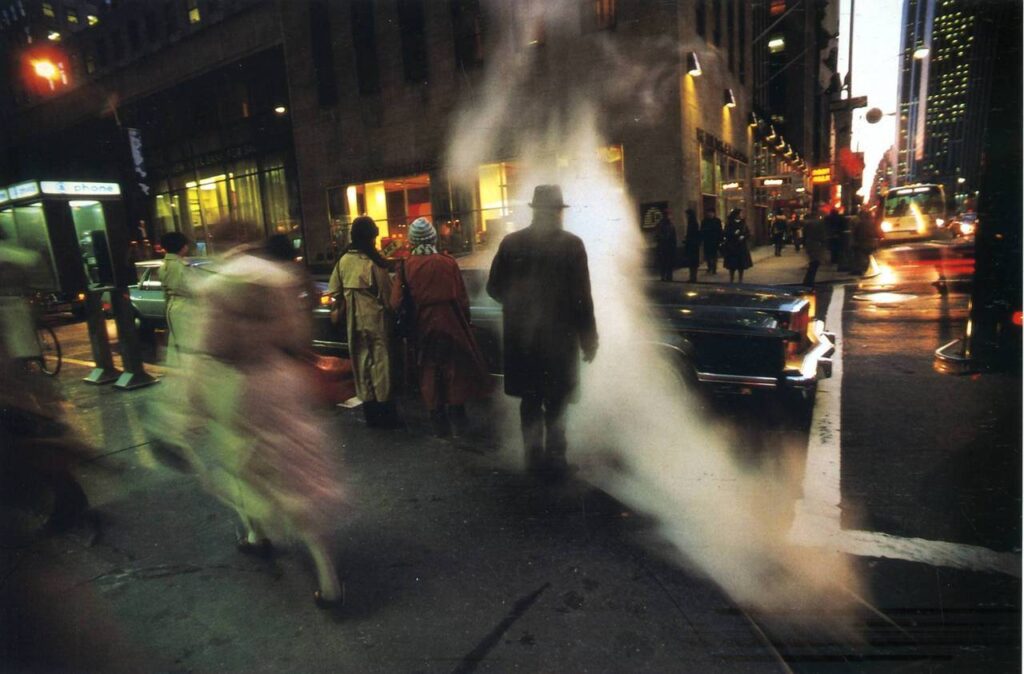
Eugène Atget
Eugene Atget (born 1857) was a French photographer noted for his photographs documenting the architecture and street scenes of Paris and its environs at the turn of the 20th century.
Though Atget was not well known during his lifetime, his visual record of a vanishing world has become an inspiration for twentieth-century photographers.
He captured streetscapes, shop fronts, and architectural details in a straight, documentary style, against the then-dominant Pictorialist trend.
Quotes:
“A good photograph is like a good hound dog, dumb, but eloquent.”
“For more than 20 years by my own work and personal initiative I have gathered from all the old streets of Vieux Paris the old hôtels, historic or curious houses, beautiful facades, beautiful doors, beautiful woodwork, door knockers, old fountains,”
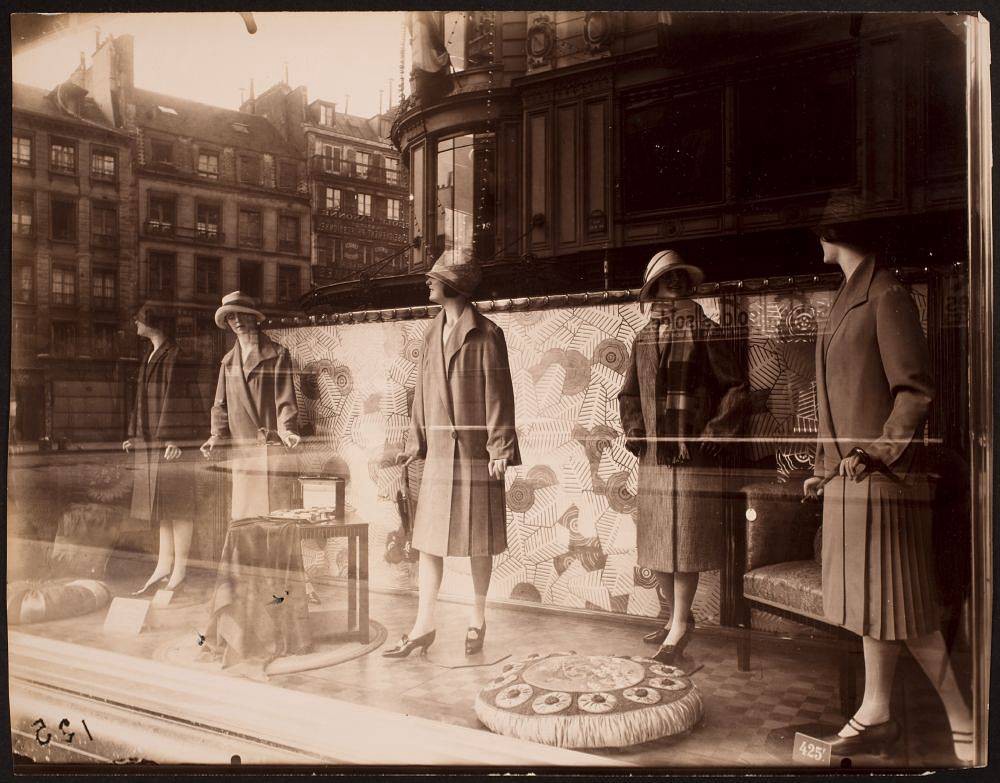
Fred Herzog
Fred Herzog (born 1930) is the pioneer of color photography and iconic Vancouver photographer. He is best known for his unusual use of color photography in the 1950s and 1960s, a time when art photography was almost exclusively associated with black-and-white imagery.
He devoted his artistic life to walking the streets and photographing his observations of the street life with all its complexities. He documented the streets of his adopted city, with its vibrant billboards by day and glowing neon by night. Diverse, spirited and unsavory; he recorded all of it with a casual frankness, and a blend of affection and curiosity. His photographs are awash with vibrant color. They are complex, mysterious, exuberant, and full of life.
Herzog’s life was a documentation of time passing by in such a way that the moments documented could still be felt. The memories preserved in each of his shots have life in them and say more to the truth of those lived moments than a stoic, colorless print.
Quotes:
“Only a few people can see but most people don’t even look.”
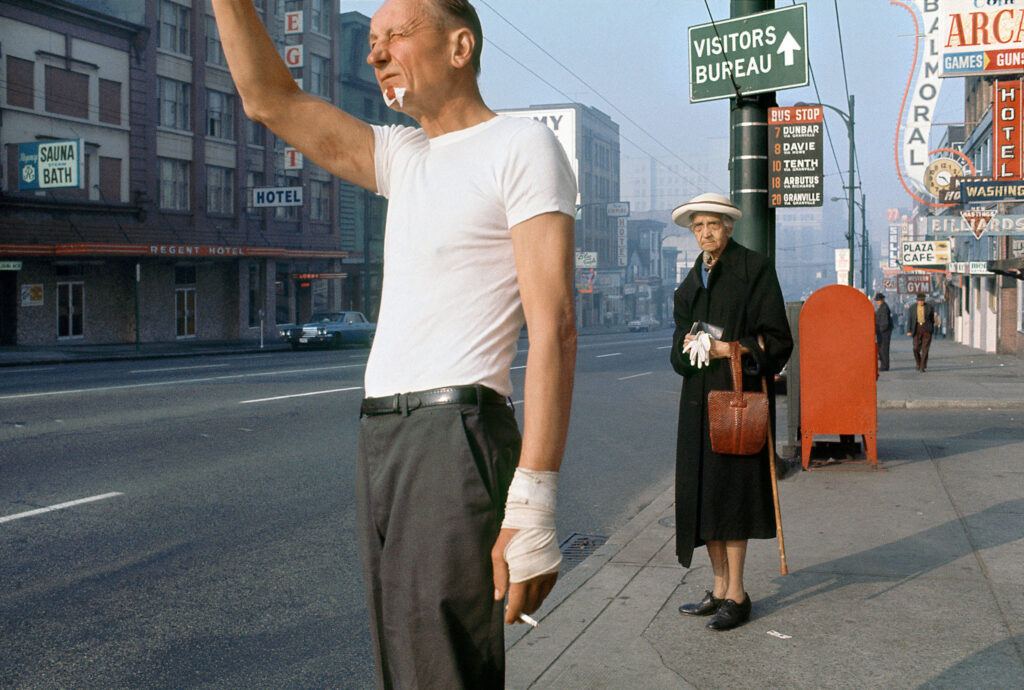
Garry Winogrand
Garry Winogrand (born 1928) was an American street photographer known for his spontaneous images of people in public engaged in everyday life. He is considered one of the most important American photographers of the 20th century, during which he amassed an archive of images capturing its attitudes, anxieties, American culture, replete with all the nightlife, excitement, heartbreak, trauma and banality that constitutes life.
He hated the term “street photographer”. He simply called himself a photographer nothing more, and nothing less.
Winogrand was caught up with the energy of his subjects, and was constantly smiling or nodding at people as he shot. It was as if his camera was secondary and his main purpose was to communicate and make quick but personal contact with people as they walked by.
He always looked in the viewfinder at the moment he shot. “It was only for a split second, but I could see him adjust his camera’s position slightly and focus before he pressed the shutter release. He was precise, fast, and in control.”
He never developed film right after shooting it. He deliberately waited a year or two, so he would have virtually no memory of the act of taking an individual photograph.
Quotes:
“You have a lifetime to learn technique. But I can teach you what is more important than technique, how to see; learn that and all you have to do afterwards is press the shutter.”
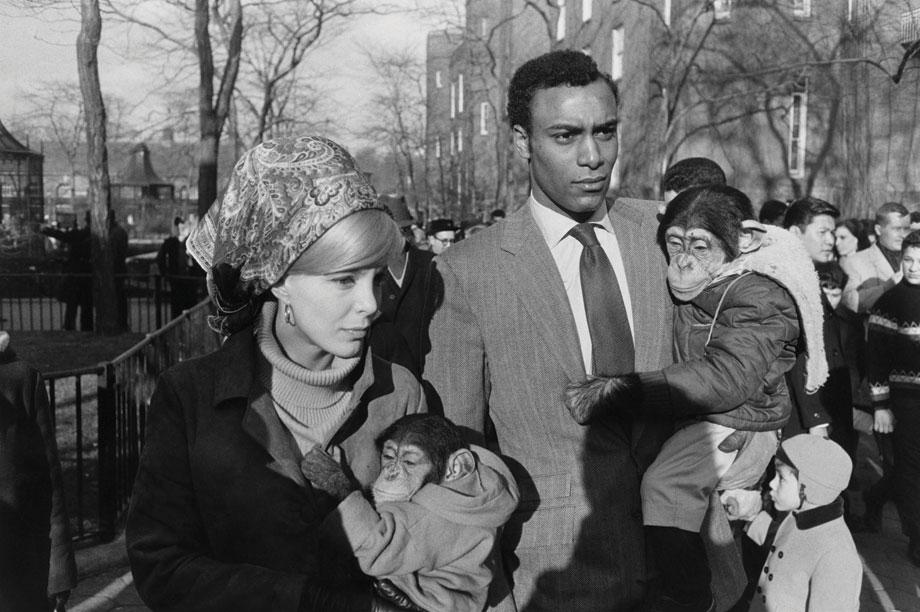
Quotes:
“At first I wasn’t sure that I had the talent, but I did know I had a fear of failure, and that fear compelled me to fight off anything that might abet it.”

Harry Gruyaert
Harry Gruyaert (born 1941) is a Belgian Magnum photographer known for his images of Morocco, Egypt, and Ireland. As one of the pioneers of color photography, Gruyaert has traveled the globe creating an archive of atmospheric portraits of places, evocative landscapes of life that both define and transcend the times in which they were made. That sense of the enigmatic, ambivalent, not entirely knowable world infuses his works.
He has had a big influence on photography in general, not just street photography and he is a great inspiration for many photographers.
Quotes:
“There is no story. It’s just a question of shapes and light”.
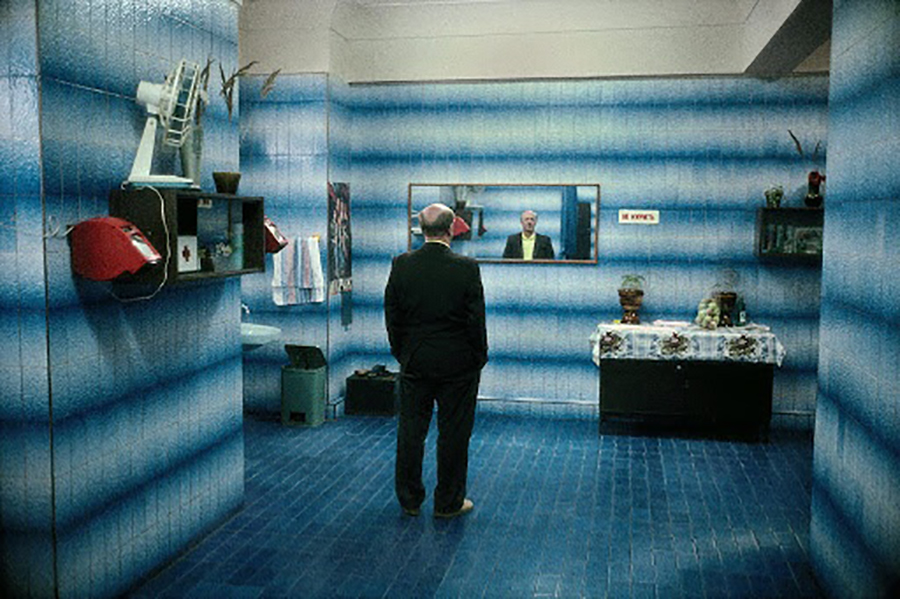
Helen Levitt
Helen Levitt (born 1913), a major photographer of the 20th century who caught fleeting moments of surpassing lyricism, mystery and quiet drama on the streets of her native New York.
She was a pioneer of color photography. Throughout her long career, Helen Levitt’s photographs have consistently reflected her poetic vision, humor, and inventiveness as much as they have honestly portrayed her subjects—men, women, and children acting out a daily drama on the sidewalks and stoops of New York City’s tenements.
She was against the notion of her pictures becoming iconic. Her photographs, made over the course of sixty years on the streets of New York City, have delighted generations of photographers, students, collectors, curators, and lovers of art in general.
Quotes:
“Since I’m inarticulate, I express myself with images,” .
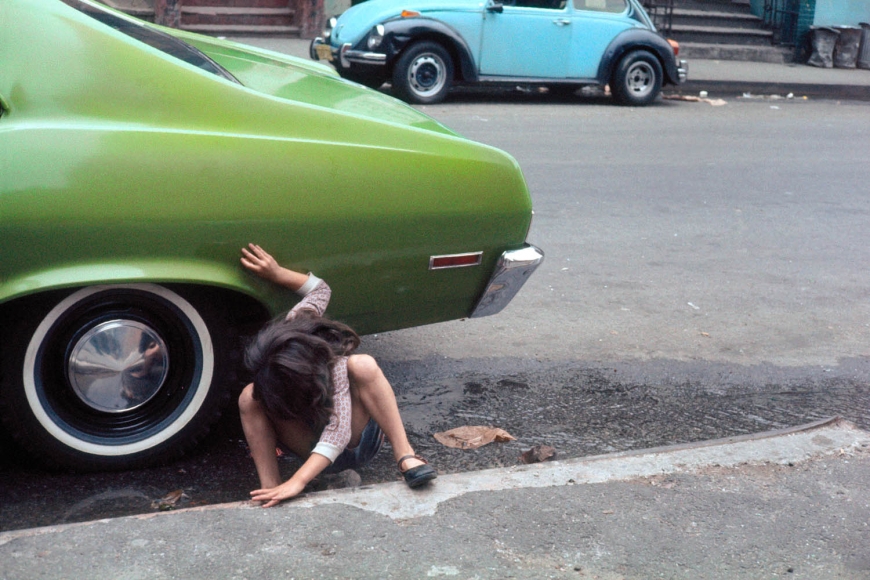
Henri Cartier-Bresson
Henri Cartier-Bresson (born 1908), known as a pioneer of street photography, is one of the most original, accomplished, influential, and beloved figures in the history of photography. He brought a new aesthetic and practice to photography, initiated modern photojournalism, and influenced countless followers.
His dramatic black-and-white works are among the most iconic images of the 20th century. Those humane, spontaneous photographs helped establish photojournalism as an art form.
The artist is perhaps best known for his 1952 book “The Decisive Moment”, the book explored his notion of photography as a candid medium: “to take a photograph means to recognize, simultaneously and within a fraction of a second‚ both the fact itself and the rigorous organization of visually perceived forms that give it a meaning.”
In the early 1930s, he helped to define photographic modernism, using a handheld camera to snatch beguiling images from fleeting moments of everyday life. His work is included in nearly every significant photographic museum collection worldwide.
He was one of the co-founders of Magnum Photos in 1947.
Quotes:
“The intensive use of photographs by mass media lays ever fresh responsibilities upon the photographer. We have to acknowledge the existence of a chasm between the economic needs of our consumer society and the requirements of those who bear witness to this epoch. This affects us all, particularly the younger generations of photographers. We must take greater care than ever not to allow ourselves to be separated from the real world and from humanity.”
“Always be attentive to the world around you, shoot from the heart, capture emotions, always keep composition in mind, and interpret and express reality the way you see it,” .
“While we’re working, we must be conscious of what we’re doing. Your eye must see a composition or an expression that life itself offers you, and you must know with intuition when to click the camera.”
“As far as I am concerned, taking photographs is a means of understanding which cannot be separated from other means of visual expression. It is a way of shouting, of freeing oneself, not of proving or asserting one’s own originality. It is a way of life.”
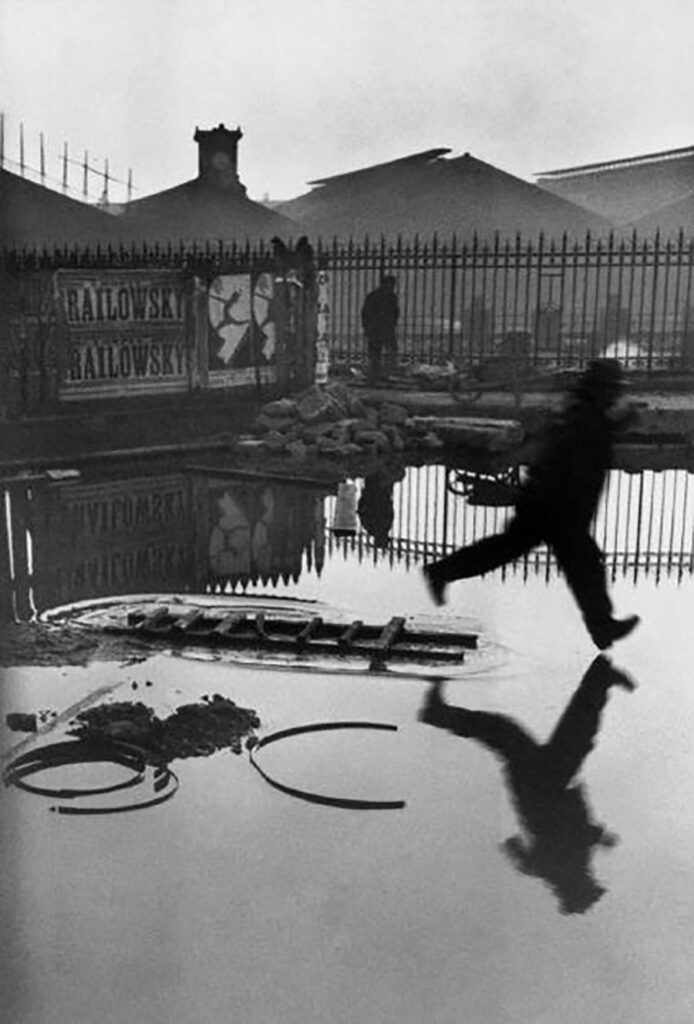
Inge Morath
Inge Morath (born 1923) was an Austrian-born American photographer and the first woman who succeeded to enter the exclusive sphere of the Magnum photo agency.
Her portraits are images that both made history and tell stories. She took photos during her travels, depicted her subjects in intense portraits capable of capturing the deepest intimacies. She had a personal vision and specific sensitivity, able to enrich the perception of the world that surrounded her.
Quotes:
“You trust your eye and cannot help but bare your soul.”
Arthur Miller, speaking of his wife Inge Morath, said “She made poetry out of people and their places over half a
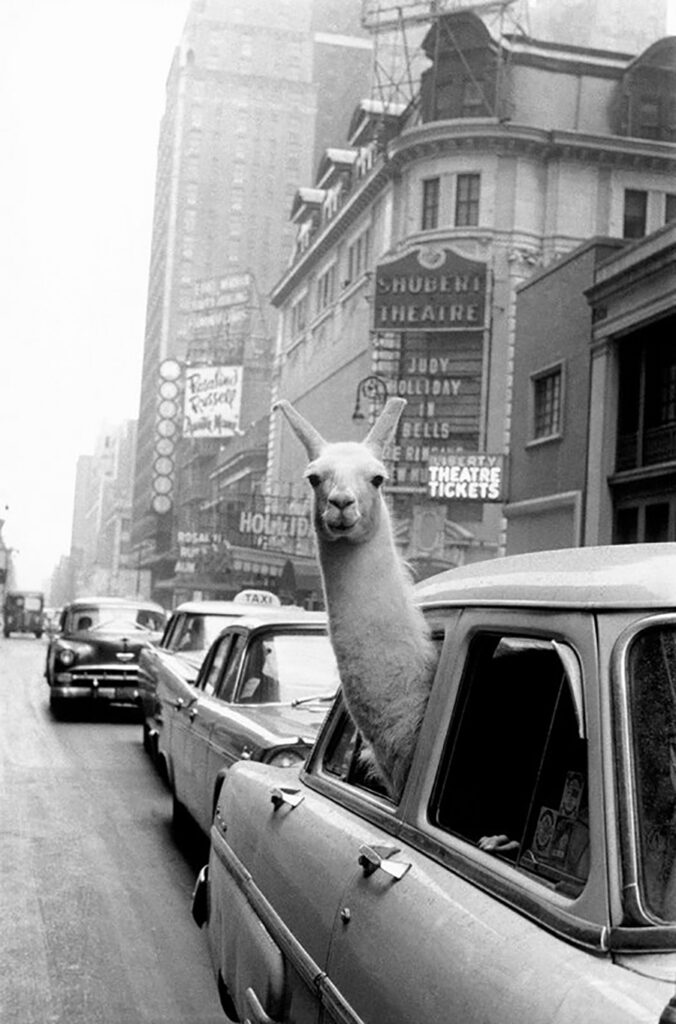
Jacques Henri-Lartigue
Jacques Henri-Lartigue (born 1894) was a French photographer and painter, best known for his spontaneous and joyful photographs of automobile races, planes and female Parisian fashion models. Jacques Henri Lartigue went on to become one of the fathers of modern photography.
His unique composition as a photographer was due, in part, to his honed skill as a gifted and successful painter. Through the work of Jacques-Henri Lartigue, we were able to see how the change of technology of portable cameras allowed for much more flexibility in street photography.
Quotes:
“To talk about photos rather than making them seems idiotic to me. It’s as though I went on and on about a woman I adored instead of making love to her.”
“What’s so incredibly amusing with photography is that while seemingly an art of the surface, it catches things I haven’t even noticed. And it pains me not to have seen things in all their depth.”
“I have never taken a picture for any other reason than that at that moment it made me happy to do so.”
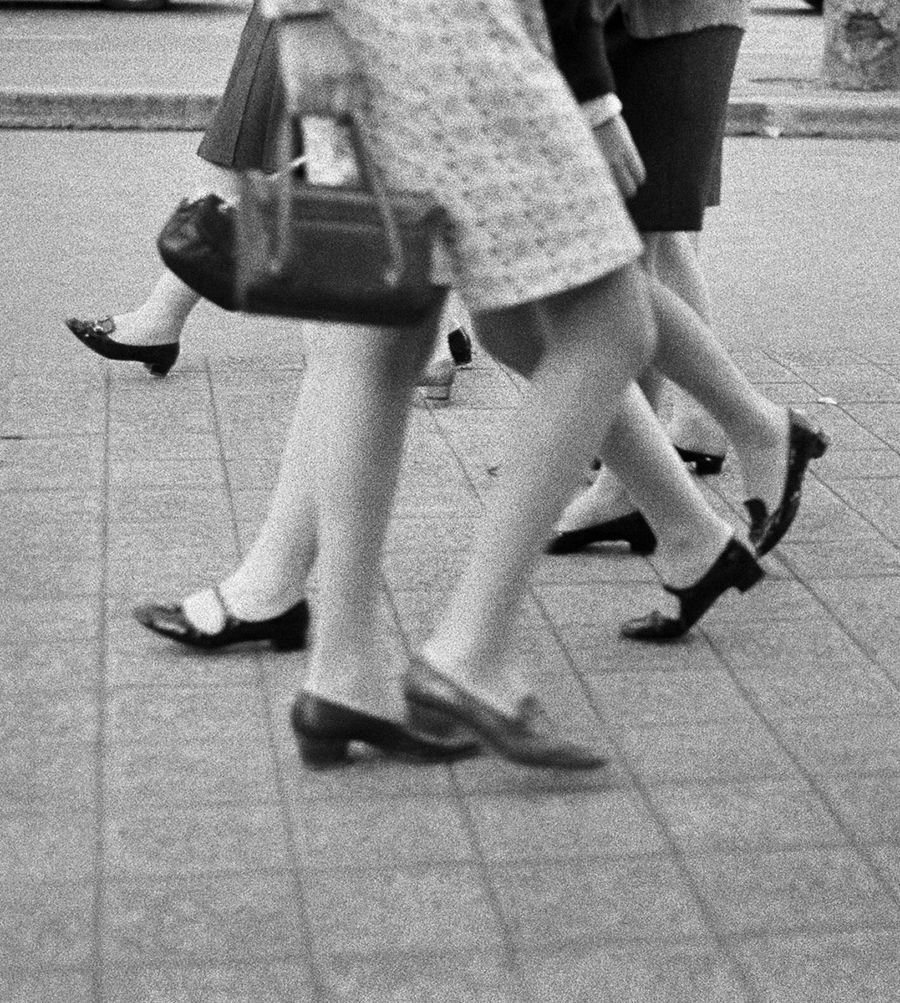
Jeff Mermelstein
Jeff Mermelstein (born 1957) is an icon in the world of New York Street photographers. He captures the everyday life of a typical hardworking New Yorker. He is known for his snapping private text conversations. He is a prolific street photographer who truly loves shooting on the streets, with his fleeting, charming, bizarre, and vivid snapshots of life in New York City, where he has lived and worked most of his life. Prowling the streets with a constantly drawn camera and an alert eye, Mermelstein documented the mood, the characters and the often-bizarre sights that made the city so unique. Everyday situations and ordinary people are the primary focus of his work. His idiosyncratic images are never composed, and are instead spontaneous records of unaware people going about their everyday lives. His photographs are very quirky, and intensely powerful as well. His bold, quick, and sometimes aggressive approach has helped him create some incredible images.
Quotes:
“Street photography has the capability to allow us to look into the mirror for clues, suggestions and warnings about who, what and how we are. It must be memorable, elastic and at the same time unwavering. For me street photography must be akin to the free flow responsive and expressive nature of music that make us feel something. It needs to be honest to its creator and viewer in the now and the future. I believe that street photography can make us better.”
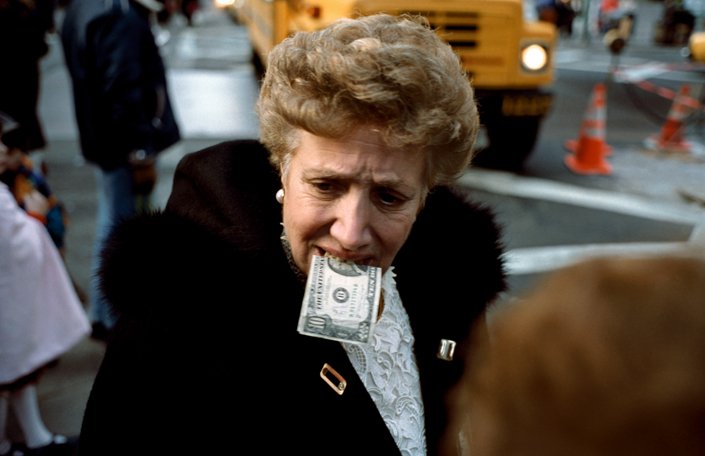
Jill Freedman
Jill Freedman (born 1939) was an American documentary photographer, street photographer, a hard-working, and hard-living photographer who published long-term documentary projects on a police station, a firehouse, a circus, the Poor People’s Campaign and other small communities.
Her ability to observe a scene and become a part of her surroundings, all while remaining invisible, produced images that are both impactful and immersive, making one feel that they are part of the experience themselves.
Quotes:
“I put a lot of time into being invisible. When I was a kid, I always wished I had one of those rings or cloaks that made you invisible. Then I realized years later, I am invisible behind a camera. I am a camera,” he says. “I’d spend days wandering around, searching for adventure, meeting all kinds of eccentric characters and loving their stories.”
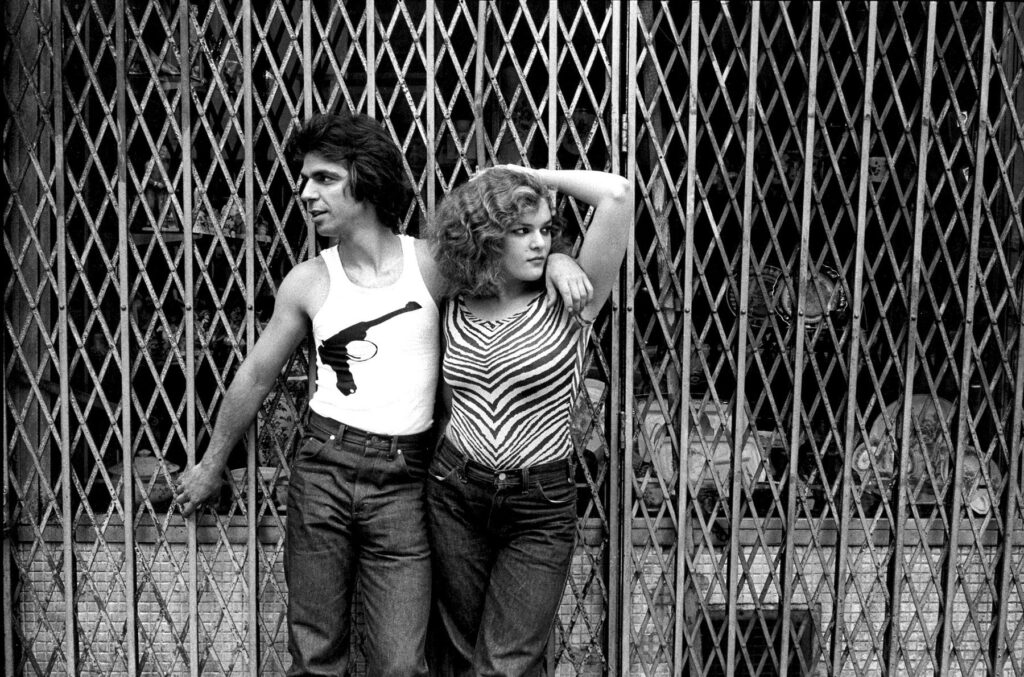
Joel Meyerowitz
Joel Meyerowitz (born 1938) is a contemporary American photographer. Notable as one of the color photography earliest advocates, he was among the first to create successful color compositions.
He demonstrated the Street Photographer’s instinct for capturing spontaneous moments of movement and human interaction through his early series of photographs. He captured fleeting moments of quintessentially American life, culture, and political unrest.
During fifty-five years of making photographs, Meyerowitz has consistently turned toward greater simplification.
Quotes:
“Everybody takes a picture, but taking a picture is very different from making a photograph,” he explains. “A photograph is something that has an idea, that you give shape to, whereas a picture has no consciousness.”
“Sometimes you just get lucky; you ask the right question and photography gives you answers that are surprising. A dialogue between the artist and the medium is essential.”
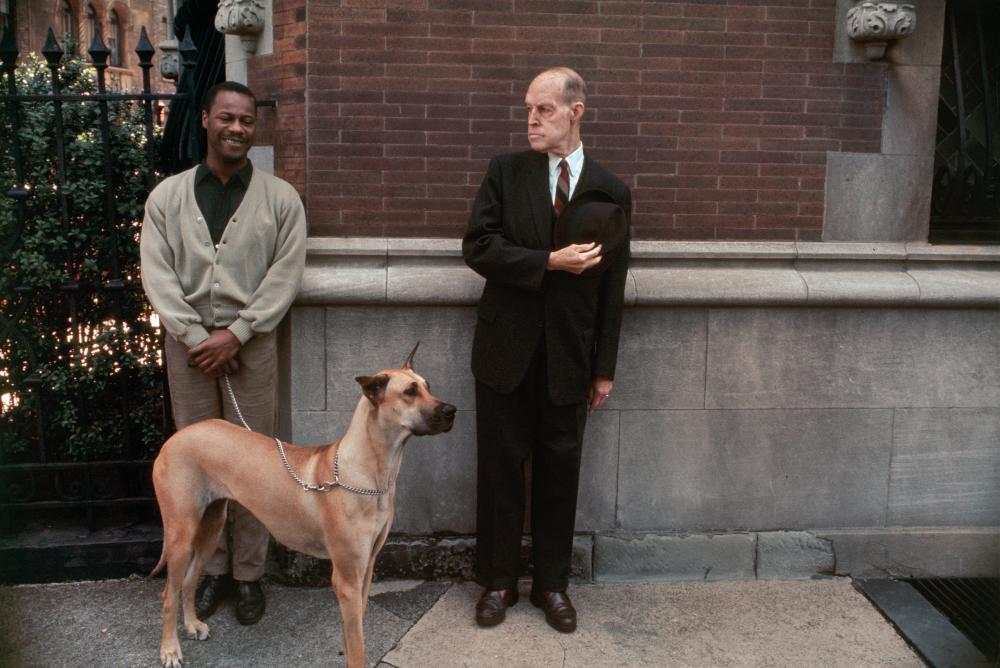
Josef Koudelka
Josef Koudelka (born 1938) is a Czech-born French Magnum photographer. He is among the most important humanist photographers in the world. He is known for his dramatic black-and-white images which address a variety of social and political issues.
He is also commonly associated with his depictions of Gypsy culture, which emphasized the mixture of joy and persecution experienced by their community.
During his years of travel, he has described the human condition in many countries in his images, “Photography is always different, every time you move to another country you are reborn. You are seeing something else,” he says.
His works carry a strong sense of composition, form, and geometry but they also carry an emotional impact. His photos are raw, gritty, and show both the hope and melancholy of life.
Quotes:
“Sometimes I photograph without looking through the viewfinder. I have mastered that well enough, it is almost as if I were looking through it, I photograph only something that has to do with me, and I never did anything that I did not want to do. I do not do editorial and I never do advertising. No, my freedom is something I do not give away easily.”
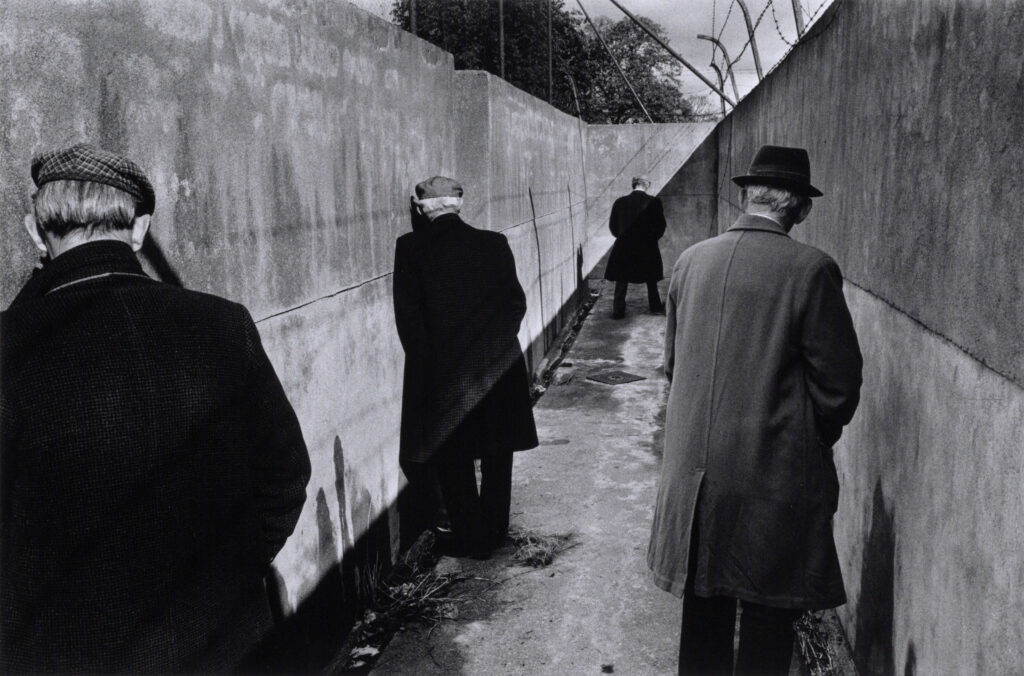
Lee Friedlander
Lee Friedlander (born 1934) remains a vital figure in photographic history because of his unique approach to documenting the streets and people of America, predominantly in the 1960s.
He evolved an influential and often imitated visual language of urban “social landscape,” with many of his photographs including fragments of store-front reflections, structures framed by fences, posters and street signs.
Friedlander’s street photography captures the unexpected overlaps of light and content in urban landscapes.
Quotes:
“It fascinates me that there is a variety of feeling about what I do. I’m not a premeditative photographer. I see a picture and I make it. If I had a chance, I’d be out shooting all the time. You don’t have to go looking for pictures. The material is generous. You go out and the pictures are staring at you.”
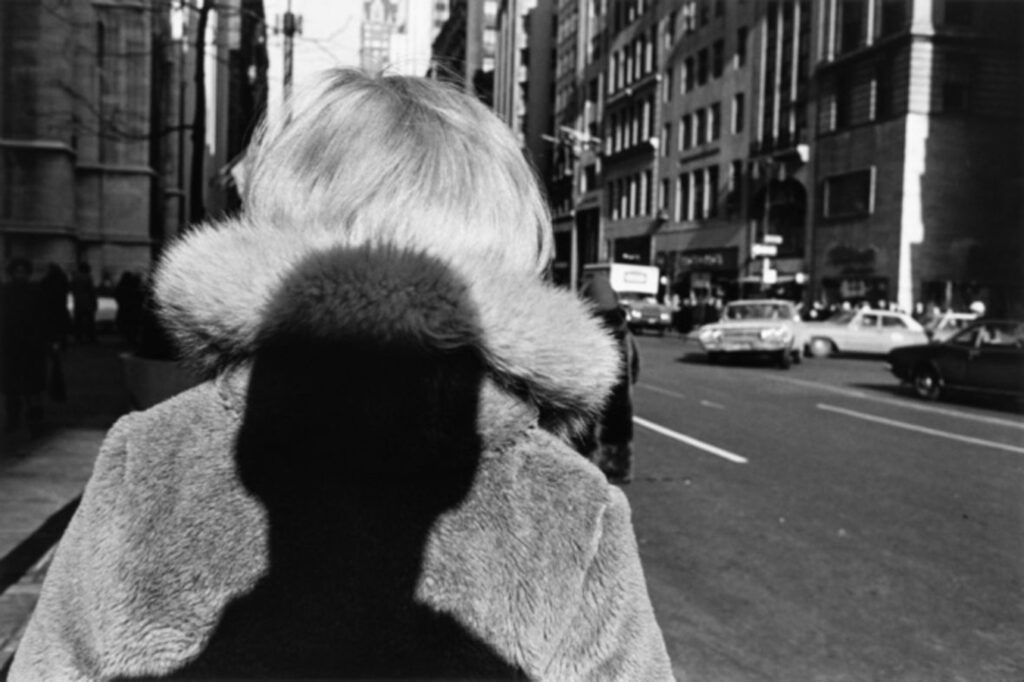
Lewis Hine
Lewis Hine (born 1874) is an American photographer who is best known for his documentation of exploited child workers and government projects.he was Working as an investigative photographer for the National Child Labor Committee (NCLC)
Hine’s interest in photography as an educational tool prompted him to adopt the medium to expose social injustices. His photos and reports, produced between 1908 and 1924, fueled public opinion and inspired Congress to enact national child labor legislatioHe used his art to bring social ills to public attention. Lewis Hine made a difference in the lives of American workers and, most importantly, American children.
Quotes:
“Photography can light up darkness and expose ignorance,”
“If I could tell the story in words, I wouldn’t need to lug a camera”
“While photographs may not lie, liars may photograph.”
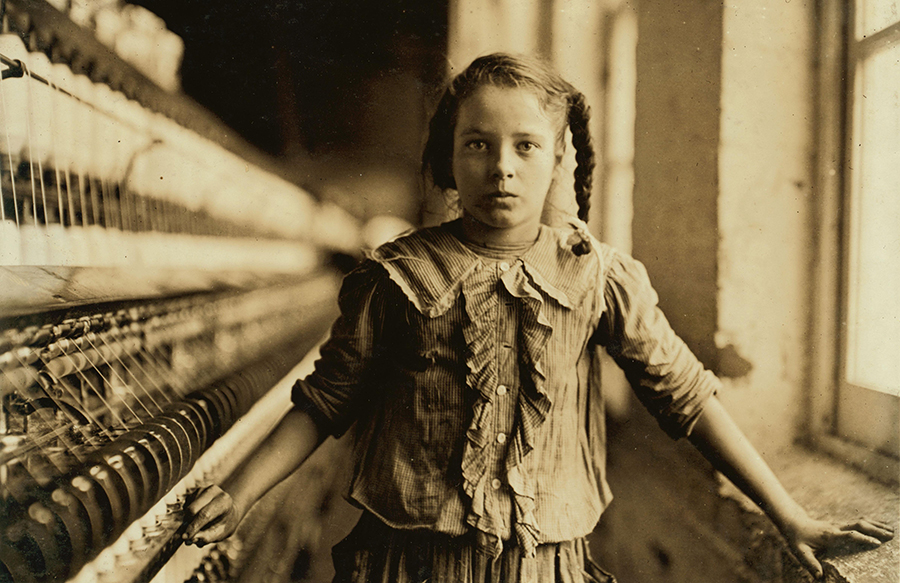
Mark Cohen
Mark Cohen (born 1943) is an American photographer best known for his innovative close-up street photography.
has spent the majority of his time shooting street photography in Wilkes-Barre and another area called Scranton for over 30 years.
“I just made my photos in Wilkes-Barre and a few other places because I wasn’t the kind of photographer who liked to, or needed to, travel around the world.”
One of the most important tools in Mark Cohen’s arsenal is his small flash. “I got a small flash-unit because I really liked the phenomenological effect I would get shooting at twilight. But the main reason I used flash was that it gives you a zone from 2 to 8 feet and you don’t have to focus, and you don’t have to worry about the subject being blurred either, because the flash is a thousandth of a second. So, you get very sharp and clear pictures of your subject,” he says.
Cohen has a peculiar style of shooting: he does it secretly, and always at hip level. Working like a sniper, he gets close, snaps low, then moves away before anyone has the chance to bristle. “If you have your camera up to your eye, you can’t keep track of what’s going on,” he says.
He often used in his work is cutting off heads. Some of his most interesting photos don’t include faces. His photos include close-ups of ankles, socks, teeth, zippers, elbows, and other small details we tend to overlook. Cohen has described his method as “intrusive”; “They’re not easy pictures. But I guess that’s why they’re mine,” he says.
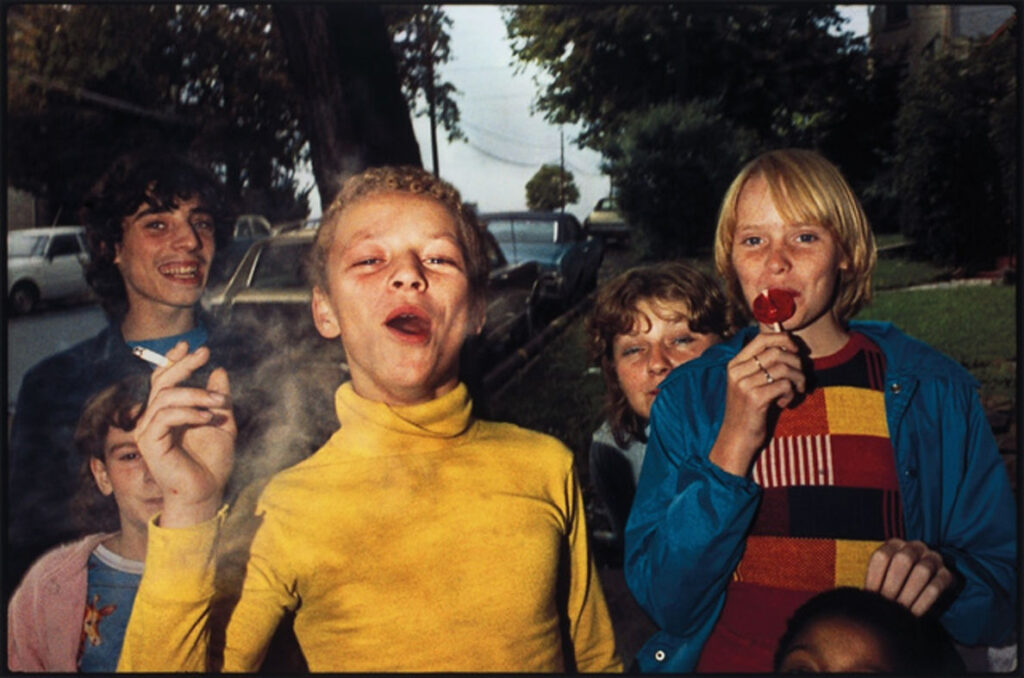
Martin Parr
Martin Parr (born 1952) is a British photographer and Magnum Photos member. He is one of the world’s most famous and successful documentary photographers.
Parr known for his photographic projects that highlight and gently satirize people and their cultures.His photographs have strong statements about society and always has a certain viewpoint or critique. his unconventional observations of human behaviors serves as a mirror to reflect society’s values.
When Martin Parr shoots street photography, he gets extremely close to his subjects and doesn’t ask for permission. The result is that he is able to get the shots for his projects that he envisions, and also gives the viewer a sense of “being there” in the midst of all the action. The use of flash in the daylight is one of Parr’s signature techniques.
Quotes:
“Change your approach. Consider yourself to be a documentary photographer and take this duty to record your family seriously,” he says.
“Photography is the simplest thing in the world, but it is incredibly complicated to make it really work.”
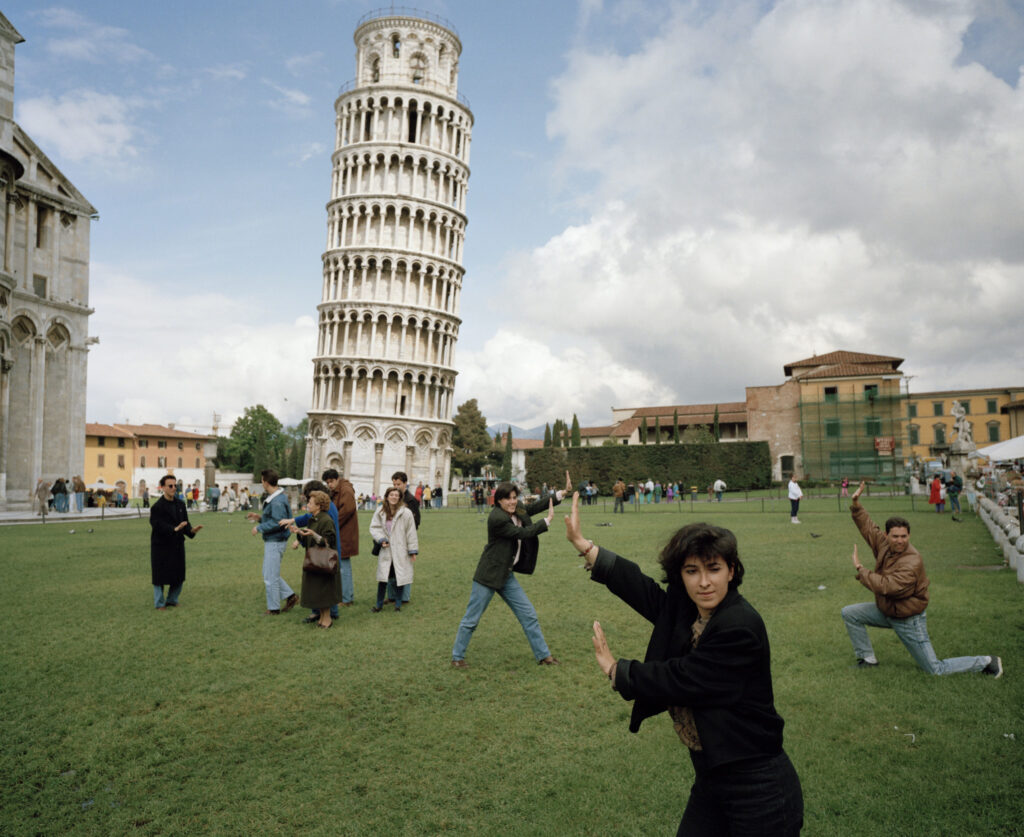
Mary Ellen Mark
Mary Ellen Mark (born 1940) was one of the best-known American female photojournalists. she is an icon in modern photography and is known for her photojournalism, portraiture, and advertising photography. Her works have enabled her to witness extremes of life around the world.
Her compelling empathetic images, mostly in black and white, document the lives of marginalized people in the United States and other countries.
She got to know the subjects she photographed very well, and she was able to convey who they were and how they lived, as well as a sense of their interior lives. Although her subjects reveal their vulnerability before her camera, their honesty implies that she relates to them with tremendous compassion and respect.
Quotes:
“I just think it’s important to be direct and honest with people about why you’re photographing them and what you’re doing. After all, you are taking some of their soul.”
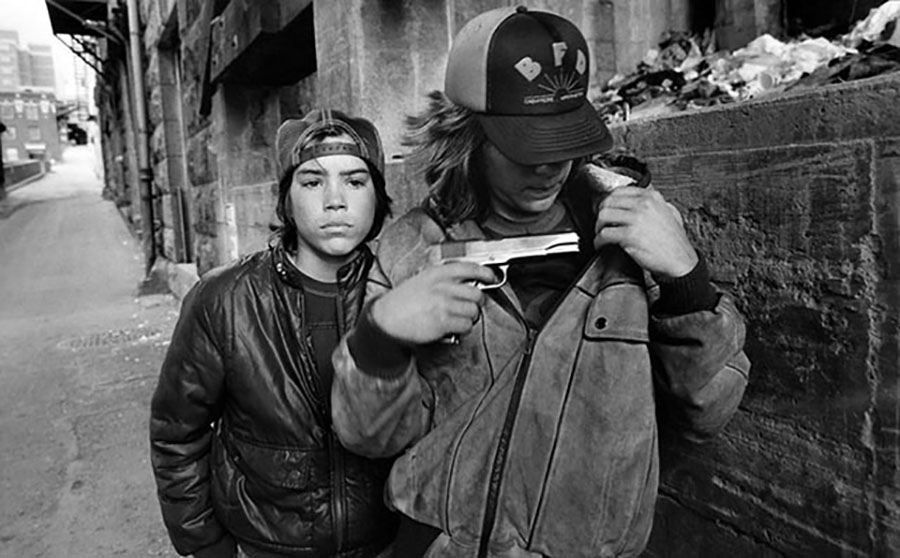
Michael Wolf
Michael Wolf (born 1950) was a German artist and photographer whose work focused on life in megacities. He was famous for capturing the claustrophobia of city life through portraits of cramped apartments, unending skyscrapers, and crowded subway cars.
He was borne in Munich, Germany, and lived in Hong Kong. The focus of the German photographer Michael Wolf’s work was life in megacities. Many of his projects document the architecture and the vernacular culture of metropolises.
Quotes:
“Everybody is promoting something.”
“I think there is a real value in an editorial point-of-view and in editorial curation, and in putting together an entire narrative around a set of topics is important.”
“One thing I can say right off the bat is that creating great editorial is a huge challenge, and you can’t help but go through the process and not appreciate how valuable this skill is, and how much I admire the people who do this every day.”
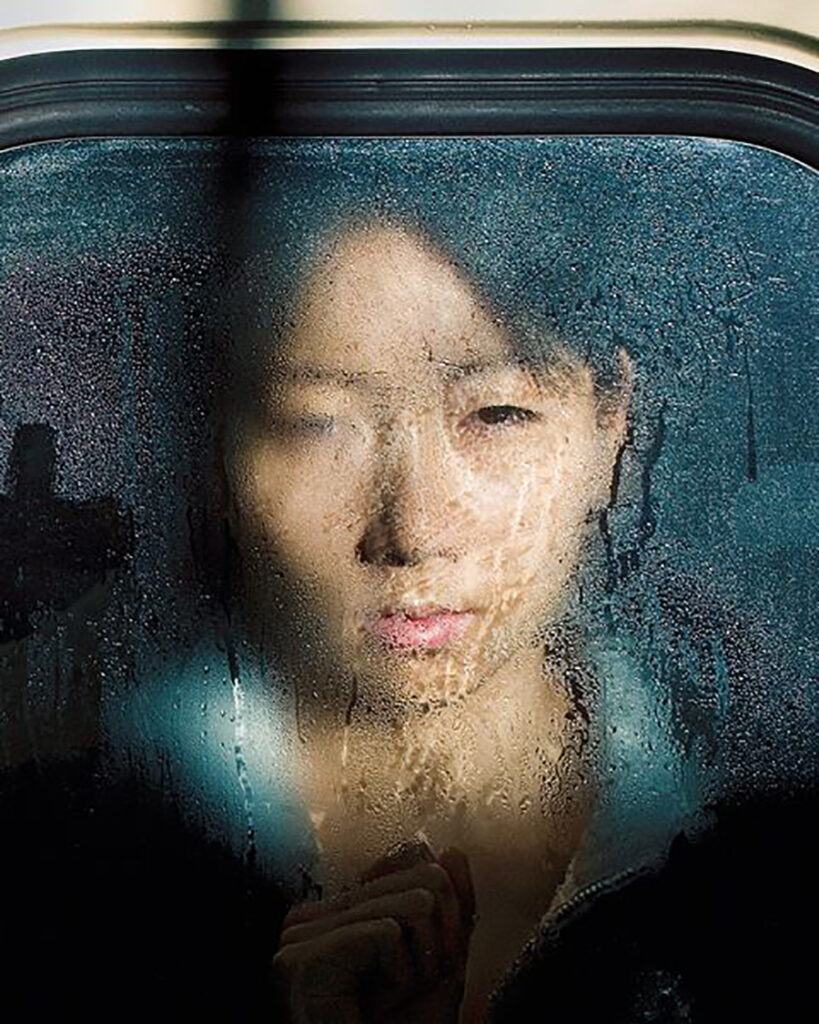
Nikos Economopoulos
Nikos Economopoulos (born 1953) is a Greek photographer known for his photography of the Balkans and of Greece in particular. He works as a member of Magnum since 1990.
Thanks to his sense of composition and space, his subjects do not seem out of place, even in a barren and seemingly endless landscapes. His pictures are powerful and full of warmth, but never cute. The poverty of the people in these rural areas, in which he predominantly takes his photographs, remains visible.
“Photography for me is not premeditated. It’s pure instinct. I don’t like preparing for it but rather react to whatever I see and experience. I don’t like going somewhere with a pre-constructed assumption but rather going with just a few basic tools and bare pieces of information that I patch together in order to be able to experience things as freely and openly as I can. In this way, every new place is a wonderland. I do not even feel I am telling a story. As a photographer, you don’t answer the question that the frame poses. You create another question. The viewer has to wonder. And you are there, partaking in or even creating that wonder,”
He got extremely close to a subject in the foreground, and focused on subjects in the background without infringing on their privacy.
Quotes:
“For me, it is easier to find a better background than to open up the aperture. What is most interesting in modern photography is how you put objects in space. That is very important. To start to break the rules in your own style. This is the target.”
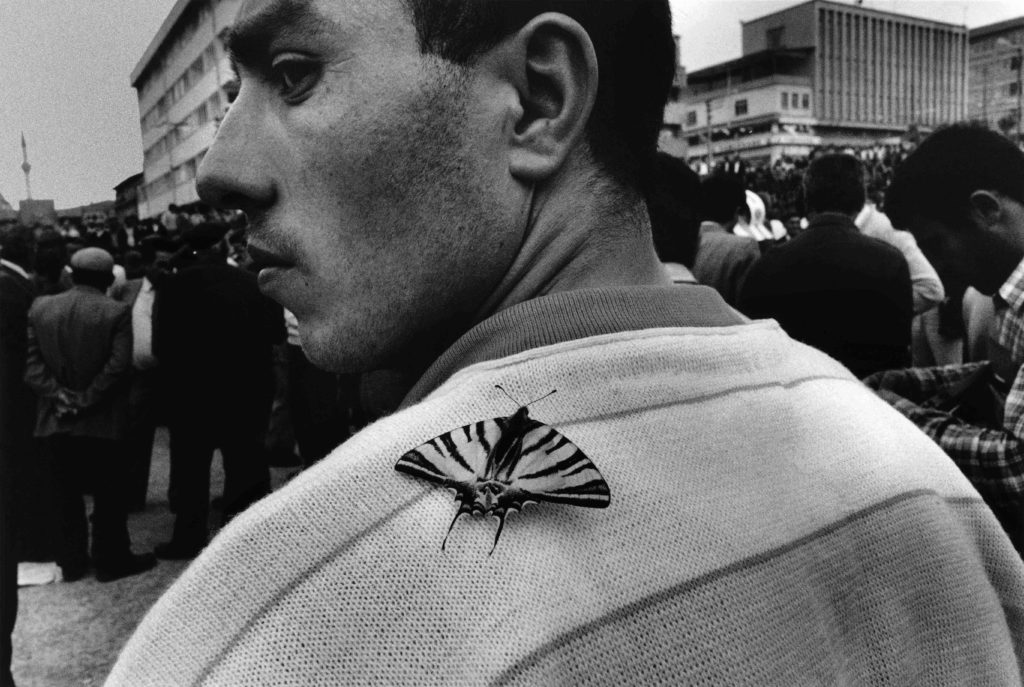
Philip-Lorca diCorcia
Philip-Lorca diCorcia (born1951) is an American photographer who acknowledged as one of the most innovative and influential photographers of the past thirty years.
DiCorcia’s images perch on the lines between fact and fiction. This is conceptual photography with the veneer of the documentary. His photographs have been integral to contemporary dialogues on street photography, portraiture and constructed versus spontaneous tableaus.
DiCorcia’s images weave together rich displays of visual elegance with subtle references to historical works of art and broader social realities.
Quotes:
“And what medium has a stronger relationship to people’s idea of the truth than one that is supposed to be an accurate representation of reality?”
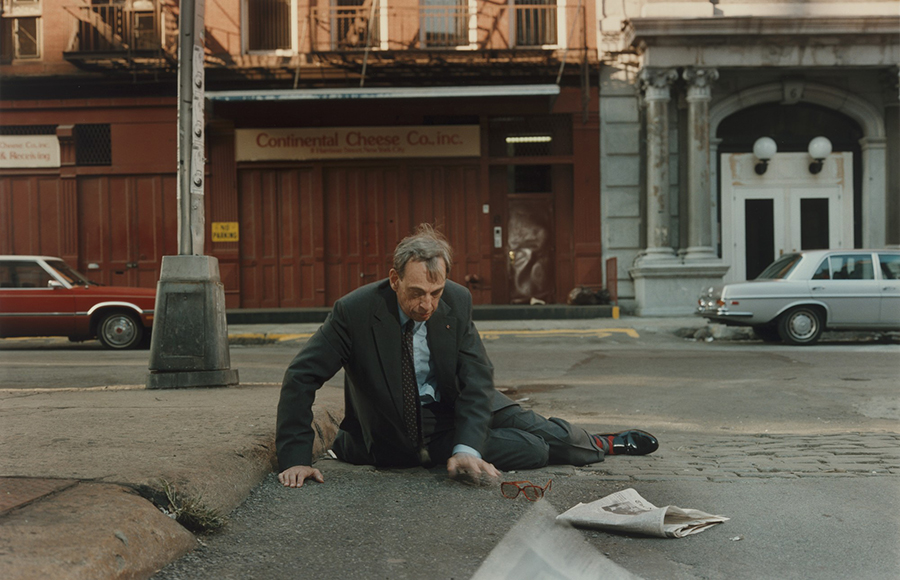
Rene Burry
René Burri (born 1933) was a Swiss Magnum photographer. He was master of documentary and street photography and he helped change photojournalism.
René Burri was where history was in the making. His photographs have had a huge influence on our visual understanding of the major political and cultural events of the second half of the twentieth century.
He never waits for the perfect moment to take a photograph; instead he quickly captures what is happening in front of the camera, which comes to include a distinctive picture.
A little luck and an extensive knowledge of art allowed Burri access to some of the most prestigious and important artists of his time, a rarefied list that includes Le Corbusier, Niemeyer, Giacometti, and Picasso, all of whose portraits he took repeatedly over the years.
Quotes:
“Everyone takes pictures, so you need to have your own opinion.”

Richard Kalvar
Richard Kalvar (born 1944) is one of the contemporary masters in street photography. He is known for his black and white street photographs and is also a member of Magnum. He has spent more than four decades building up a diverse body of work that is characterized by a finely honed sense of observation. He creates images that are a bit absurd, comical, often strange, of unknown passers-by in the street.
His photographs are marked by a strong homogeneity of aesthetic and theme. A sense of mystery in photographs, and not telling the full story is what he creates, letting the viewer do the work of interpreting the photograph for themselves. Richard Kalvar is a great source of inspiration and knowledge.
Quotes:
“The photograph is completely abstracted from life, yet it looks like life. That is what has always excited me about photography,”
“I walk around a lot. That’s necessary. I try to go to places where interesting things might happen. And I’m always looking.”
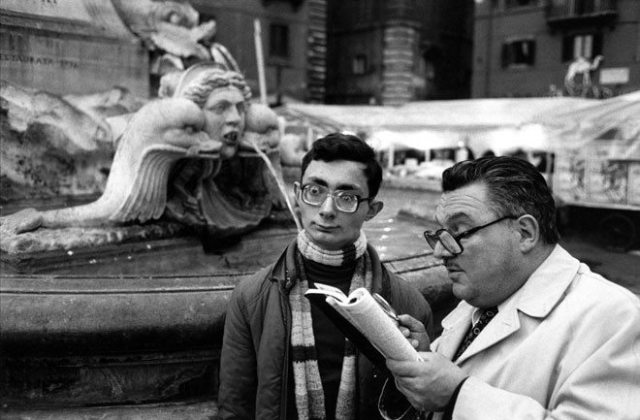
Richard Sandler
Richard Sandler (born 1946) is a New York based documentary filmmaker, street photographer, photojournalist, photography curator, and saxophonist. He is thoughtful, erudite, and harbors a great passion for street photography.
Capturing some of the most iconic street photography of this bustling city in flux with his Leica, he documented generations of New Yorkers caught in the whirlwind of change that almost 25 years brought upon the city.
His work is collected by museums and individuals. Sandler’s New York of the late 70s and 80s is a cyclone of faces, furs, and filth. It’s a visceral cross-section of fabulous wealth and terrible misfortune, often found in the same frame.
Quotes:
“I guess I believe in the remedial power of art, Because with street photography, with this body of work, I’m definitely implying a lot of things and hopefully making people aware of some of the political realities on the street.”
“The beauty of shooting street photography, is that you respond before you have time to think.”
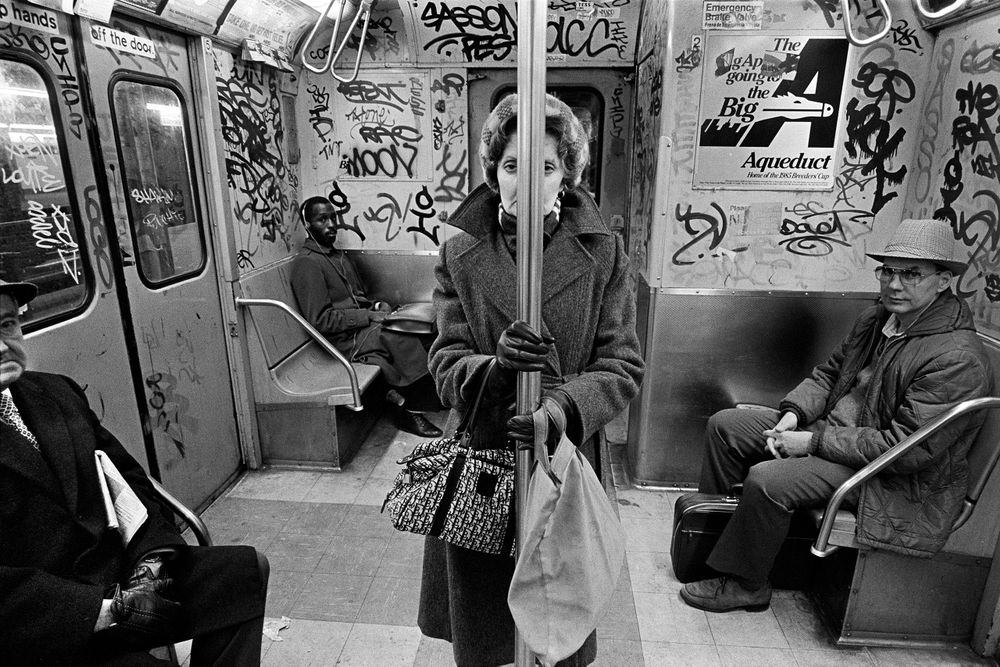
Robert Doisneau
Robert Doisneau (born 1912) was one of the French’s most noted photographers and early pioneer of photojournalism and street photography. His poetic approach to street photography recorded French everyday life in often playful and surreal images. Always charmed by his subjects, he enjoyed finding amusing juxtapositions or oddities of human nature. He was a champion of humanist photography. His iconic black and white images of life in Paris was some of the most recognizable to this day.
Doisneau shot his most famous photograph: Le baiser de l’hôtel de ville (1950), also known as The Kiss, an iconic shot of a young couple kissing passionately and unselfconsciously amongst the Parisian crowds.
Robert Doisneau was the ultimate storyteller. His pictures, well versed in the laws and lines of photographic communication, became synonymous with a way of life.
Quotes:
“The marvels of daily life are exciting; no movie director can arrange the unexpected that you find in the street.””.
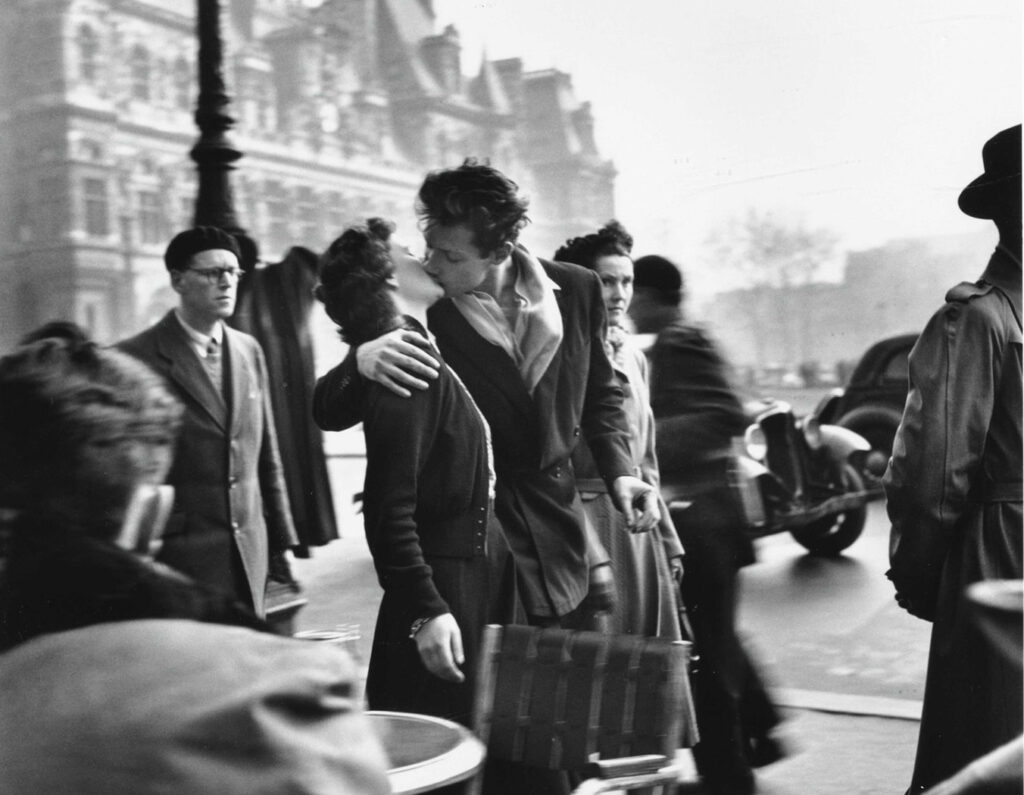
Robert Frank
Robert Frank (born 1924), Swiss American photographer and director who was one of the most influential photographers of the mid-20th century, noted for his ironic renderings of American life.
His photos are dark, grim, and a depressing view of America. But at the same time, the photos are elegant, sequenced beautifully, and create a great “sense of place” of America during the time he photographed.
He saw the world in a way that was at odds with commonly perceived visual clichés of his time but which was certainly more truthful. While the darkness and idiosyncratic nature of much of his vision at first shocked many people then it became the template for much of what was to follow in photography.
Quotes:
“There is one thing the photograph must contain, the humanity of the moment. This kind of photography is realism. But realism is not enough – there has to be vision, and the two together can make a good photograph.”
“Black and white are the colors of photography. To me they symbolize the alternatives of hope and despair to which mankind is forever subjected.”
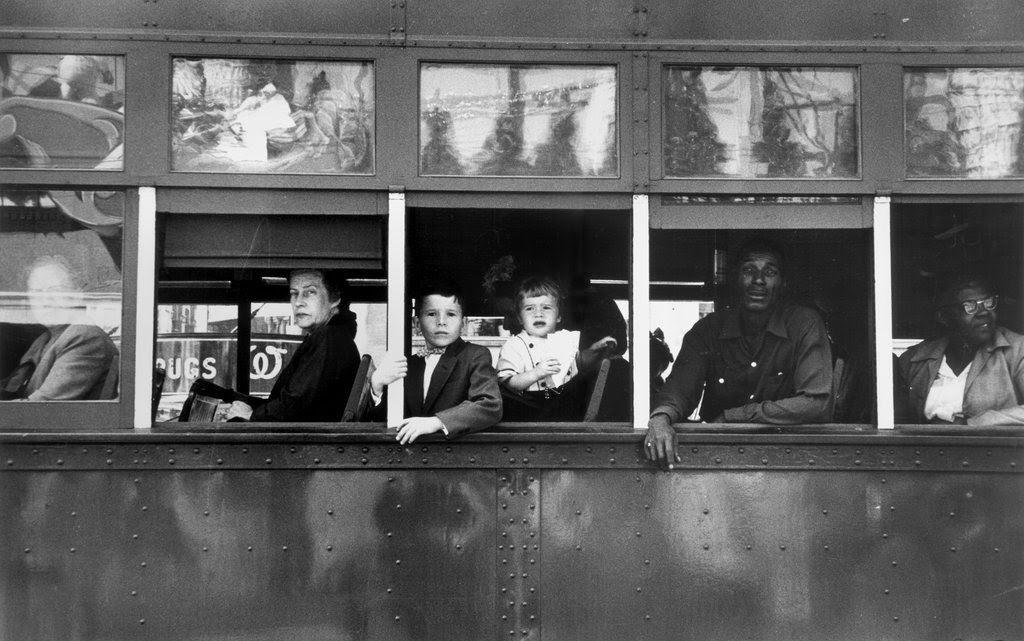
Saul Leiter
Saul Leiter (born 1923) was an American artist and early pioneer of color photography. With distinctive imagery suffused with painterly qualities. Saul Leiter received no formal training, but has gained renown for his street photography. He is noted as one of the outstanding figures in post-war photography.
“A window covered with raindrops interests me more than a photograph of a famous person,” he says. “I spent a great deal of my life being ignored. I was always very happy that way. Being ignored is a great privilege. That is how I think I learnt to see what others do not see and to react to situations differently. I simply looked at the world, not really prepared for anything.”
Saul Leiter was a photographer who stood at the crossroads of fashion, street photography, and abstract expressionism. Having started out as a painter, he was influenced by color, shapes and the camera as a tool for turning reality into his very own vision. Leiter has made an enormous and unique contribution to street photography. When you look at his photos, things are often not what they seem, and that’s half the fun of browsing through his work.
Quotes:
“There are the things that are out in the open, and there are the things that are hidden. The real world has more to do with what is hidden.”
“I like it when one is not certain what one sees. When we do not know why the photographer has taken a picture and when we do not know why we are looking at it, all of a sudden we discover something that we start seeing. I like this confusion.”
“Being ignored is a great privilege. That is how I think I learned to see what others do not see and to react to situations differently. I simply looked at the world, not really prepared for anything.”
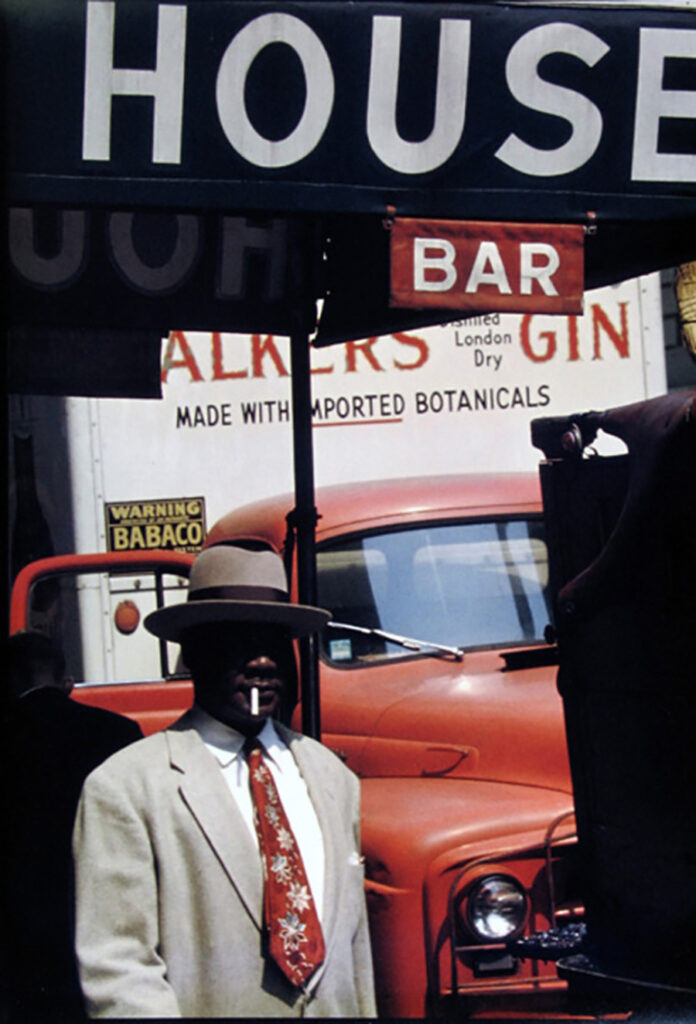
Steve McCurry
Steve McCurry (born 1950) is an American freelancer photojournalist and Magnum photographer.He is one of the most iconic voices in contemporary photography for more than 30 years, with scores of magazine and book covers, over a dozen books, and countless exhibitions around the world to his name. McCurry is best known for his evocative color photographs that documenting human struggles, joy, conflicts, vanishing cultures, ancient traditions, and contemporary culture. Many of his images have become modern icons.
He achieved world renown with his 1984 photograph Afghan Girl, a striking depiction of a young refugee with mesmerizing green eyes.
Quotes:
“Most of my photos are grounded in people, I look for the unguarded moment, the essential soul peeking out, experience etched on a person’s face.”
“I don’t think pictures are worth dying for, but I don’t want to live knowing I was timid.”

Tony ray jones
Tony Ray Jones (born 1941) was one of the great pioneers of British photography. He is best remembered for defining a new way of looking at his own society. His photographs are documentary with irony, nostalgia, compassion and light-hearted quirky that make keen observations on contemporary British society.
Ray-Jones managed to establish an individual personal style. He constructed complex images against a uniquely English backdrop, where the spaces between the components of the image were as important as the main subject matter itself.
Quotes:
“Tony Ray-Jones was one of my initial inspirations. His imagery showed me what was possible photographing my own country.” – Martin Par
“Photography for me is an exciting and personal way of reacting to and commenting on one’s environment and I feel that it is perhaps a great pity that more people don’t consider it as a medium of self-expression instead of selling themselves to the commercial world of journalism and advertising.”
“Photography can be a mirror and reflect life as it is, but I also think it is possible to walk, like Alice, through a looking glass and find another kind of world with the camera.”
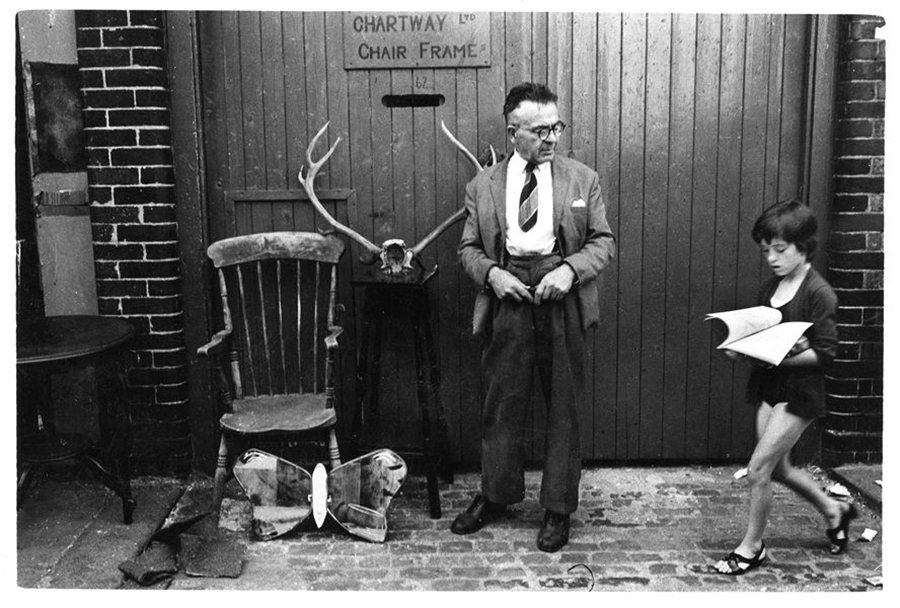
Vivian Maier
Vivian Dorothy Maier (born 1926) was an American street photographer whose work was not discovered and recognized until her death. She worked for about forty years as a nanny. A person who fit the stereotypical European sensibilities of an independent liberated woman, accent and all, yet born in New York City.
She was obsessed with the practice of taking photographs — which she did for most of her life, and she was obsessed with details of daily life on the streets, from newspapers to men wearing hats. She created incredible black and white and color work through the 1950’s all the way through the late 1990′s.
She was quite conservative. Most of the photos she took were just one shot of a scene. Sometimes when she thought the scene was really interesting, she would work the scenes and shoot up to 8 shots.
She photographed people who were stationary—and also people who she found interesting as they walked by her.
Quotes:
“We have to make room for other people. It’s a wheel. You get on. You go to the end. And someone else has the same opportunity to go to the end. And so on. And somebody else takes their place.”
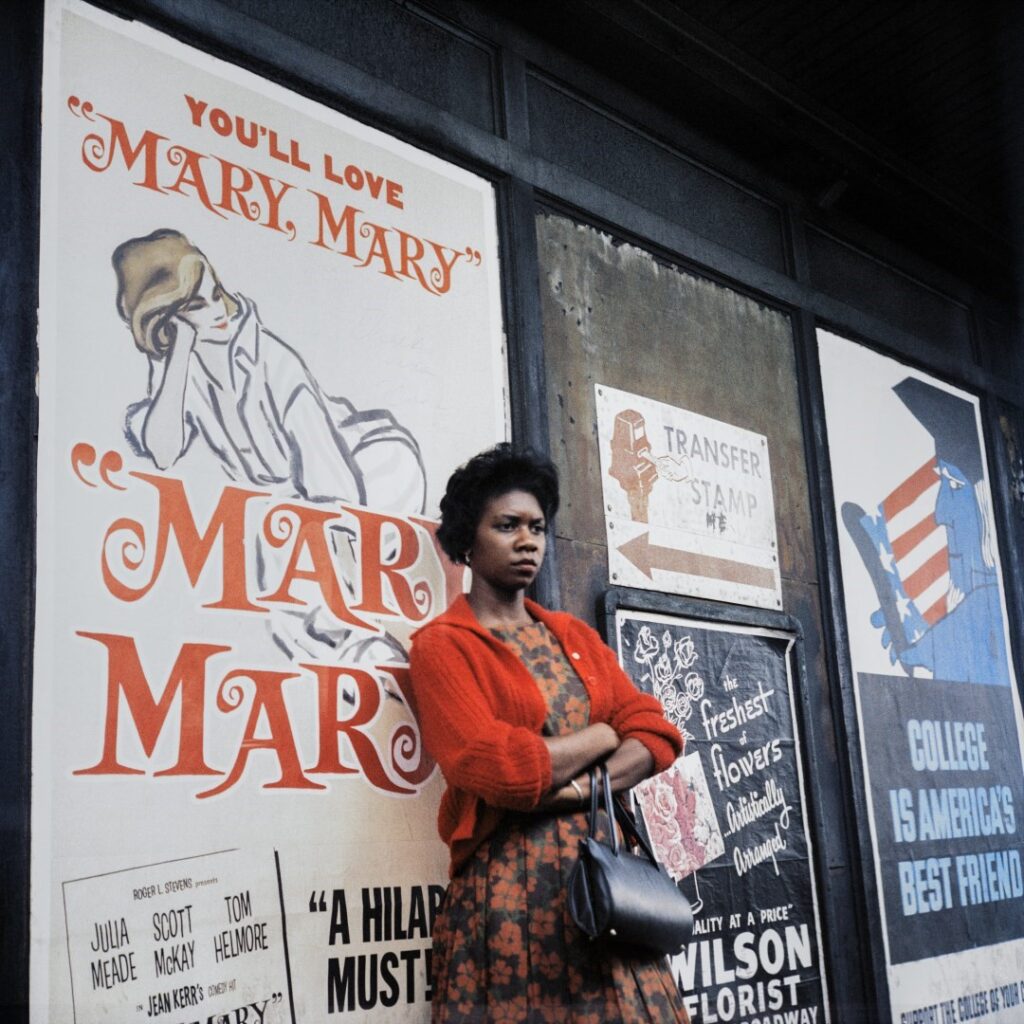
William Eugene Smith
William Eugene Smith (born 1918) was an American photojournalist and a full member of Magnum. Noted for his compelling photo-essays,perhaps he is the single most important American photographer in the development of the editorial photo essay.
By privileged honesty and technique in his carefully sequenced photo essays, he became one of the most respected documentary photographers in mid-twentieth-century America which were characterized by a strong sense of empathy and social conscience.
He documented countless wars, social issues, and even put his life on the line in doing so. Smith was fascinated by the City of Steel, the faces of the workers, its streets, its factories and the infinite details and contradictions of its social fabric,He wasn’t interested in just making pretty photos–he wanted his photos to create an emotional resonance with his viewer, and to bring a certain story to life. He embedded himself into the lives of his subjects and got to know them inside and out. This helped him create intimate portraits and images which really told stories.
Quotes:
“I wanted my pictures to carry some message against the greed, the stupidity and the intolerances that cause these wars.”
“I’ve never made any picture, good or bad, without paying for it in emotional turmoil.”
“Up to and including the moment of exposure, the photographer is working in an undeniably subjective way. By his choice of technical approach, by the selection of the subject matter…and by his decision as to the exact cinematic instant of exposure, he is blending the variables of interpretation into an emotional whole.”
“I am an idealist. I often feel I would like to be an artist in an ivory tower. Yet it is imperative that I speak to people, so I must desert that ivory tower. To do this, I am a journalist—a photojournalist. But I am always torn between the attitude of the journalist, who is a recorder of facts, and the artist, who is often necessarily at odds with the facts. My principle concern is for honesty, above all honesty with myself…”
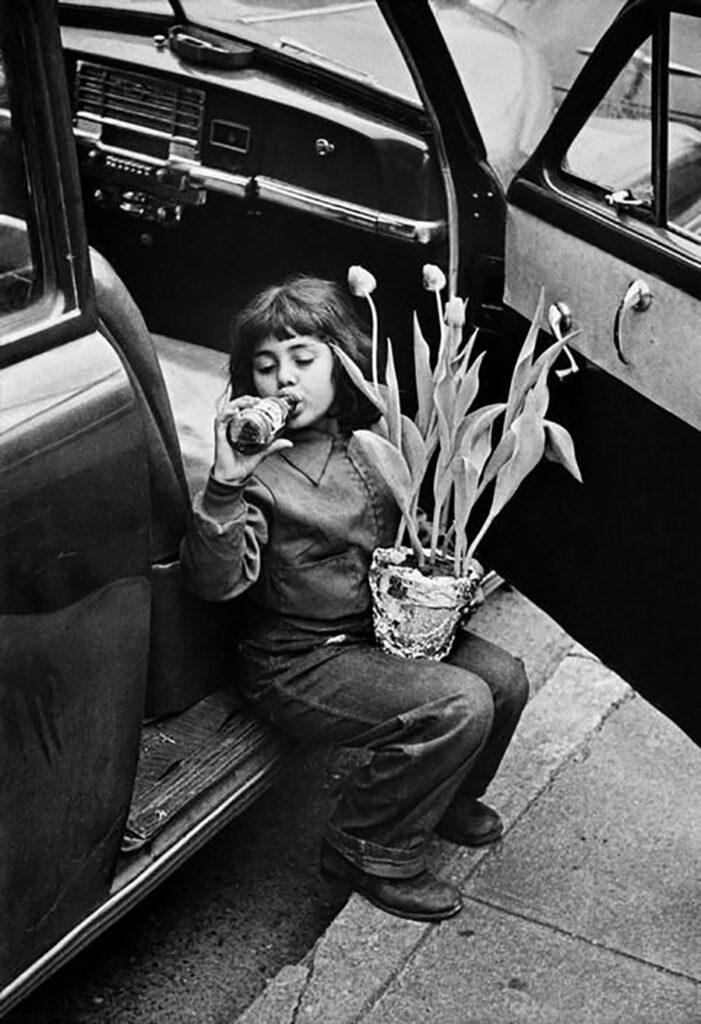
Walker Evans
Walker Evans (born 1903) was a pioneer of the documentary style of photography. He was known for his work for the Farm Security Administration, also known for his black-and-white images documenting the impact of the Great Depression. Much of Evans’s work from the FSA period uses the large-format, 8×10-inch view camera.
He spent his early career photographing the streets of New York, experimenting with high and low angles, patterns of light and shadow and various compositions.
His photographs, are point-of-view images that reflect his distinctive vision of America. He aimed to capture the quotidian beauty and diaristic events of daily life. “I used to try to figure out precisely what I was seeing all the time, until I discovered I didn’t need to,” he says.
His photographs were as prototypes both for the American documentary movement of the 1930s and for street photographers of the 1940s and 50s. His precisely composed, intricately detailed, spare photographs insisted on their subject matter, and his impartial acceptance of his subjects made his work seem true and aesthetically pure–qualities that have been the goal of documentary photography ever since. His elegant, crystal-clear photographs and articulate publications have inspired several generations of artists.
Quotes:
“Whether he is an artist or not, the photographer is a joyous sensualist, for the simple reason that the eye traffics in feelings, not in thoughts.”
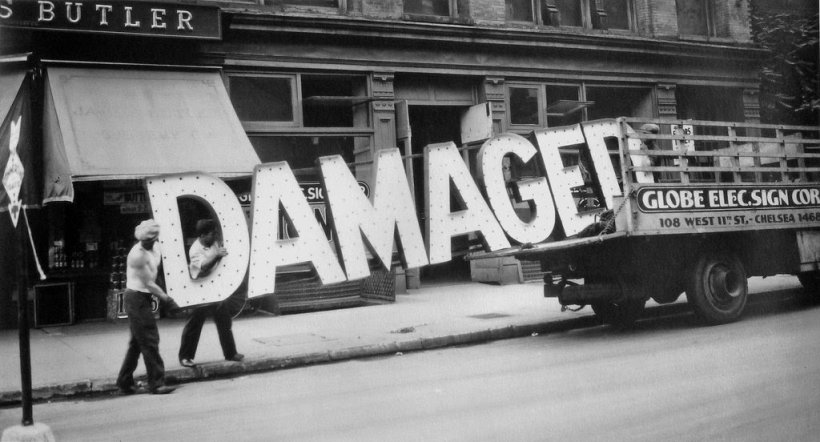
Weegee
Arthur Fellig (born 1899), known by his pseudonym Weegee, was a photographer and photojournalist, known for black-and-white images documenting murder and turmoil of New York City, noted for his gritty yet compassionate images of the aftermath of New York street crimes and disasters. He gained a reputation for having an almost mystical sense of when and where illegal acts would occur, he had uncanny ability to arrive quickly at crime scenes–sometimes, even before the police.
As a photographer, he went to the heart of ugly situations to illustrate the often-gruesome realities of life in the city. Weegee’s images scream at their audience. An assault to the eyes was created through his use of the flash’s severe light; the harsh contrasts and deep shadows that resulted gave his images an extra jolt. Concerned more with the impact of his images than with the artistry, Weegee favored a tone of sarcasm and irony with a touch of compassion in his work.
Quotes:
“I have no inhibitions and neither does my camera…,” he says. “To me a photograph is a page from life, and that being the case, it must be real.”
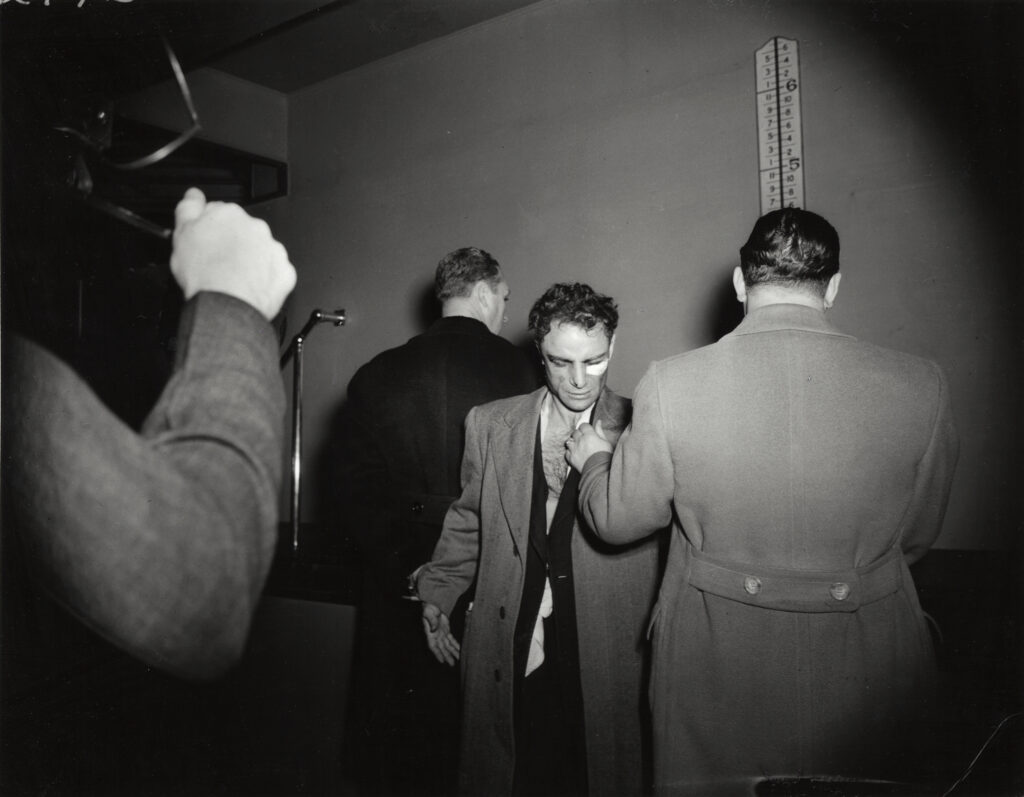
William Eggleston
William Eggleston (born 1939) is an American photographer. He is widely credited with increasing recognition for color photography as a legitimate artistic medium. He became famous for taking color photographs of everyday life and portraits of average people. He assumes a neutral gaze and creates his art from commonplace subjects: such as motel rooms and storefronts, a farmer’s muddy Ford truck, a red ceiling in a friend’s house, the contents of his own refrigerator. In his work, Eggleston photographs “democratically”-he literally photographs the world around him. His large-format prints monumentalize everyday subjects, everything is equally important; every detail deserves attention, potentially carrying beauty and mystery.
Quotes:
“I had the attitude that I would work with this present-day material and do the best I could to describe it. With photography, not intending to make any particular comment about whether it was good or bad or whether I liked it or not. It was just there, and I was interested in it.”
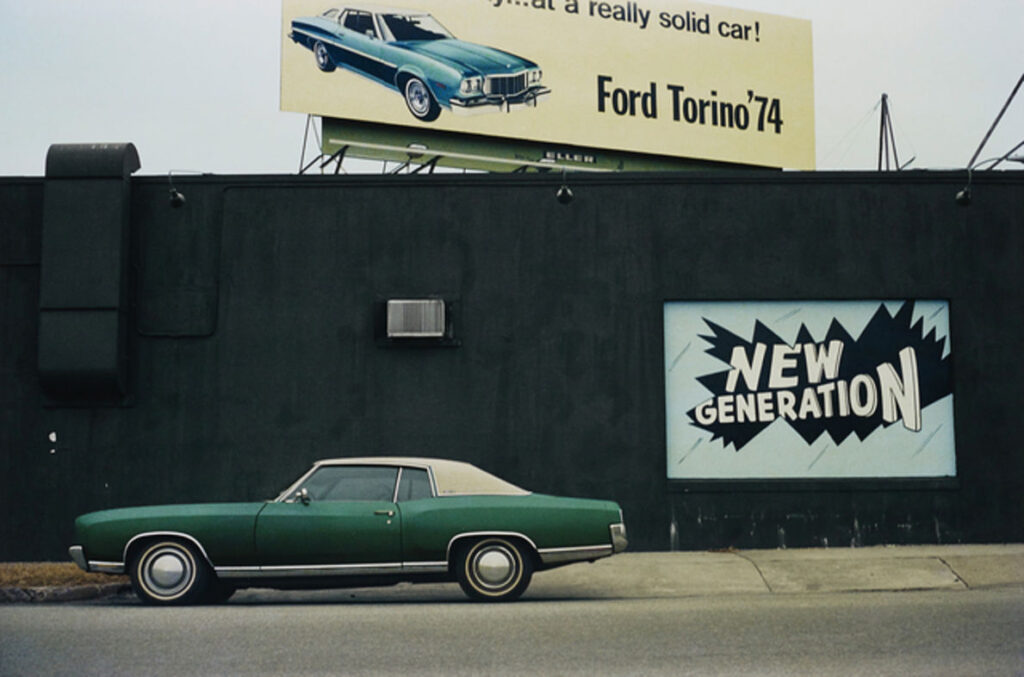
William Klein
William Klein (born 1928) is an American-born French photographer and filmmaker noted for his ironic approach to both media and his extensive use of unusual photographic techniques in the context of photojournalism and fashion photography.
Klein was one of the most rebellious street photographers in the course of history. He went against all of the traditions of photography such as composition, using wide-angle lenses, blurring his photographs, getting up close and personal, interacting with his subjects, creating grainy and high-contrast images, and far more.
Klein’s street photography was very subjective. He traveled to places all around the world and photographed things how he saw them.
Quotes:
“I photograph what I see in front of me, I move in close to see better and use a wide-angle lens to get as much as possible in the frame.”
“I don’t roam around with a camera and never did. I took pictures in spurts, for my books, for some assignments or on special occasions. Like people who take out their cameras for Christmas and birthdays. Each time, like them, probably, I feel it’s the first time and as if I would have to relearn the moves. Luckily, it comes pretty fast, like riding a bike.”
“I have always loved the amateur side of photography, automatic photographs, accidental photographs with uncentered compositions, heads cut off, whatever.”
